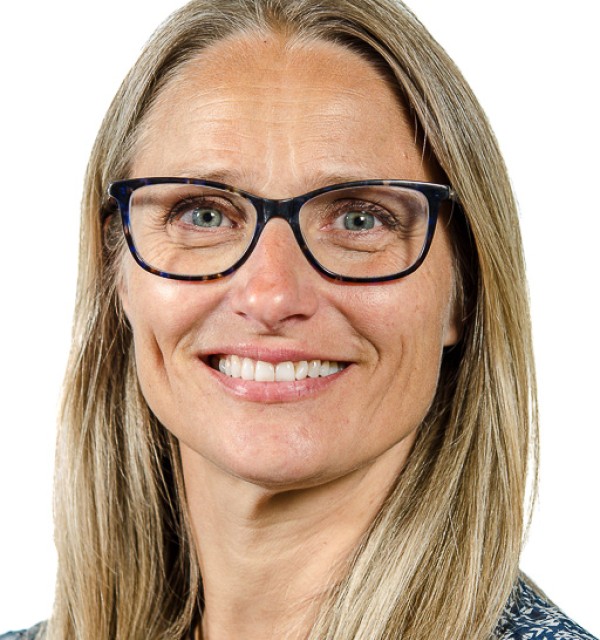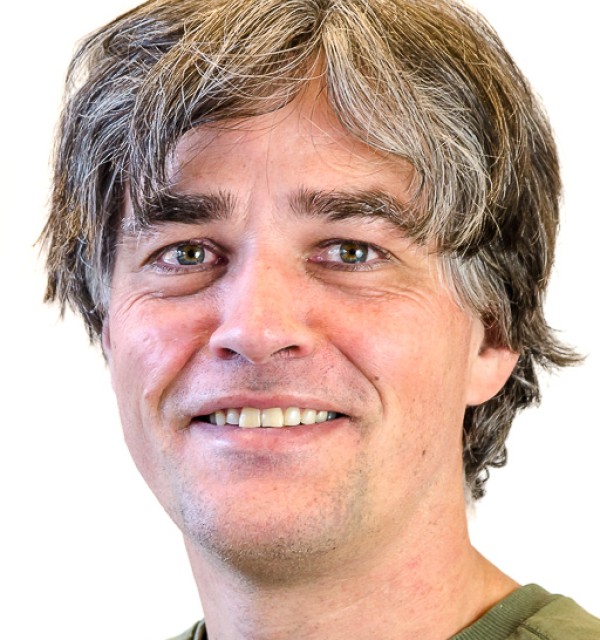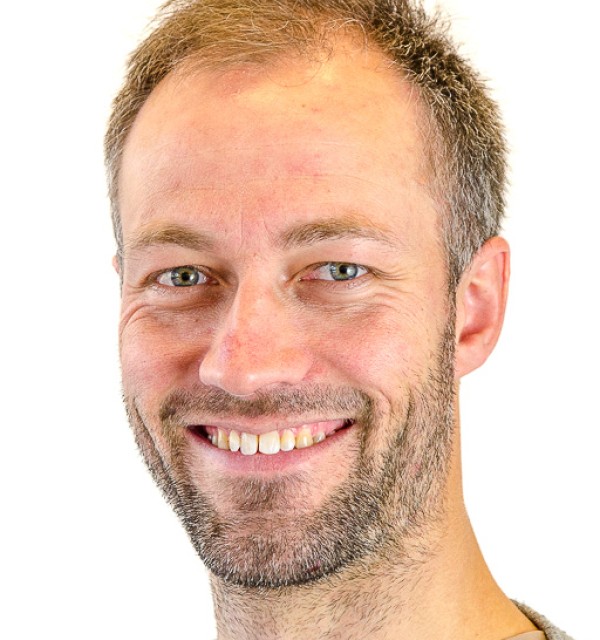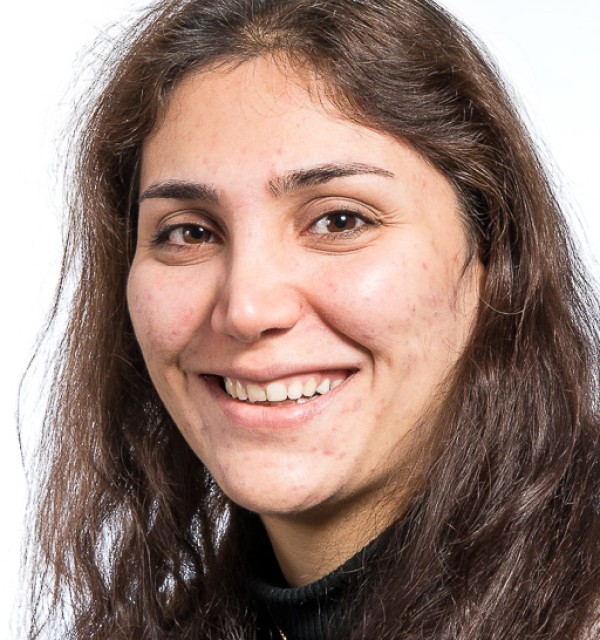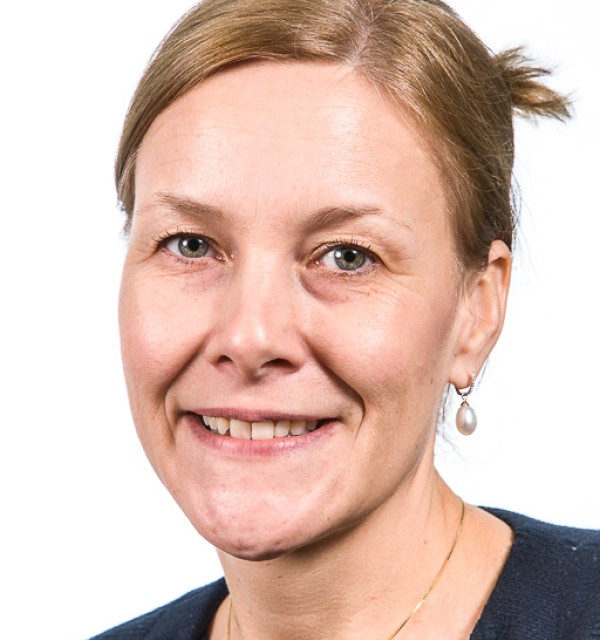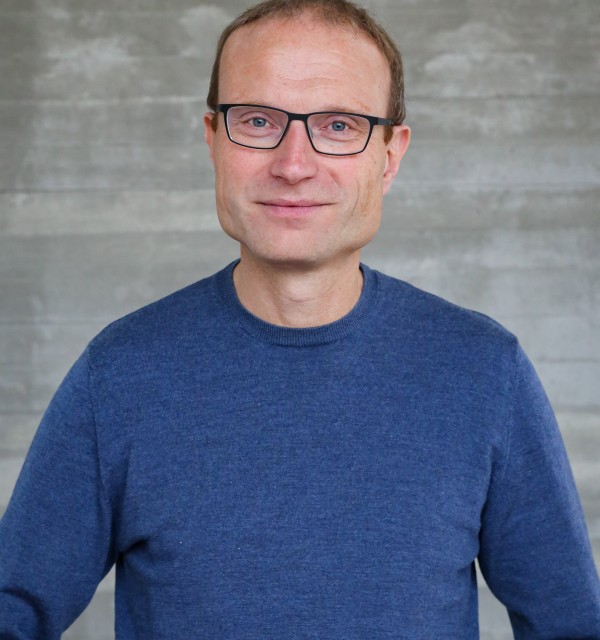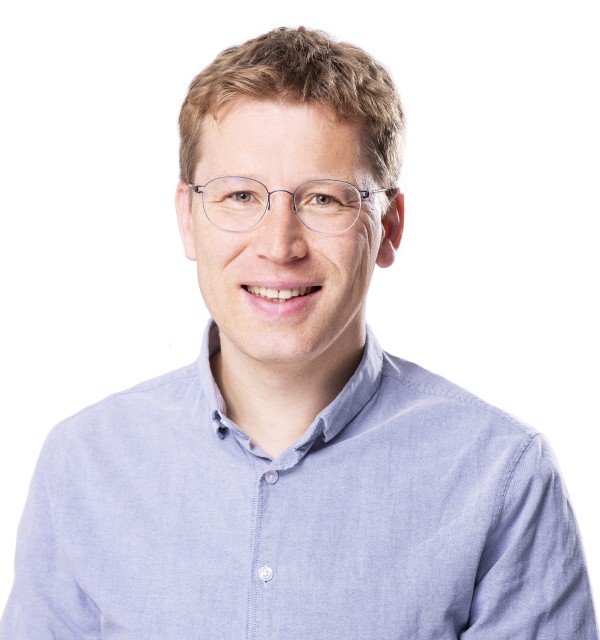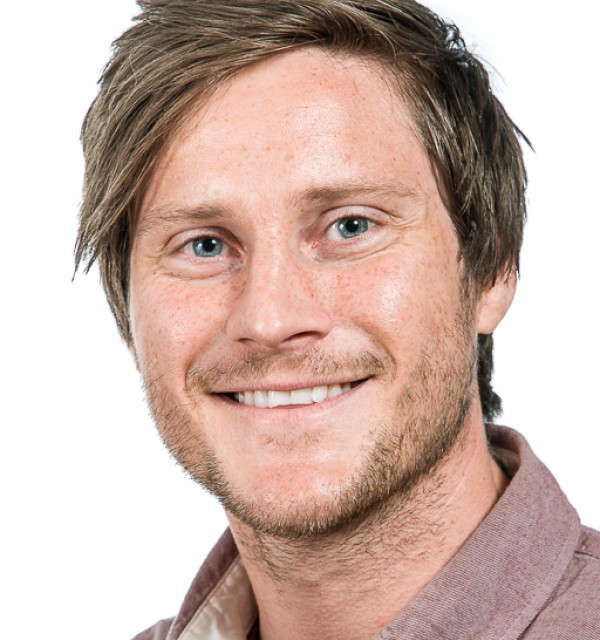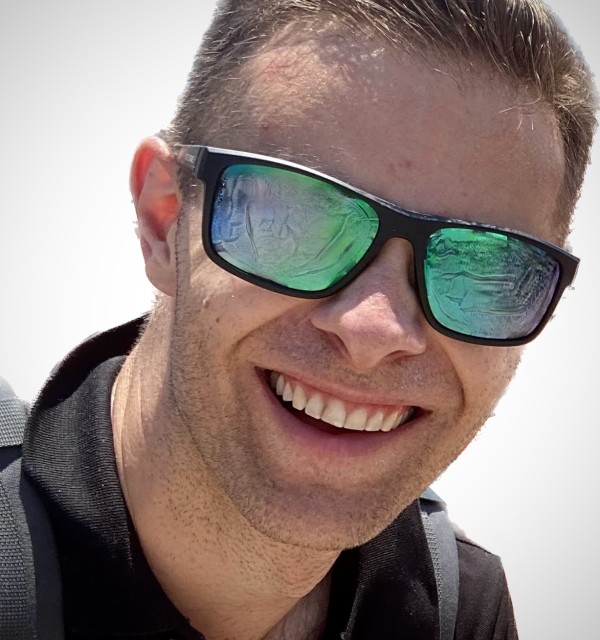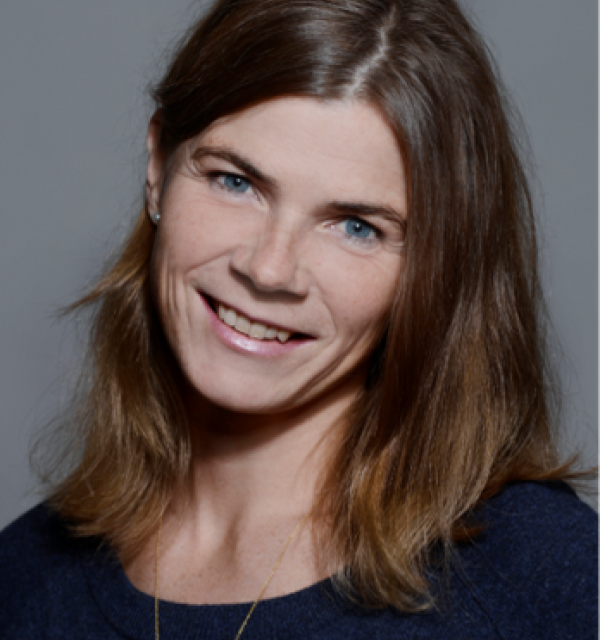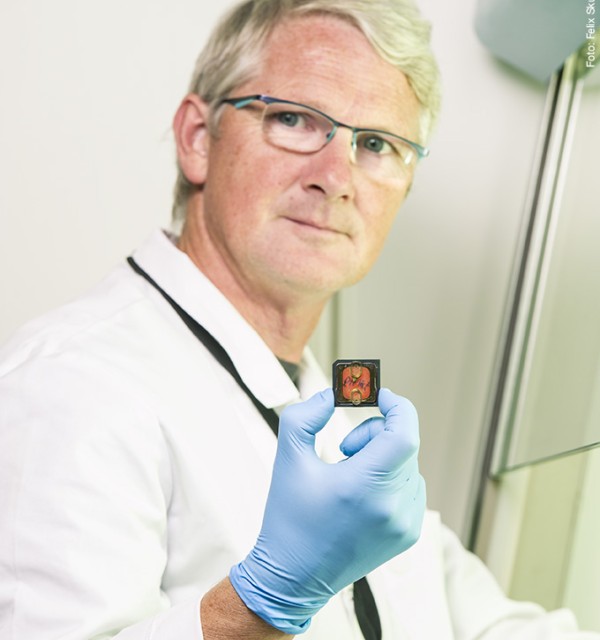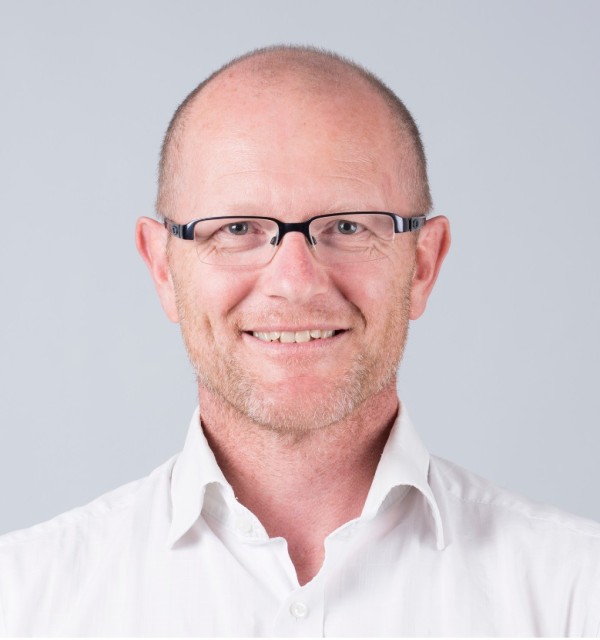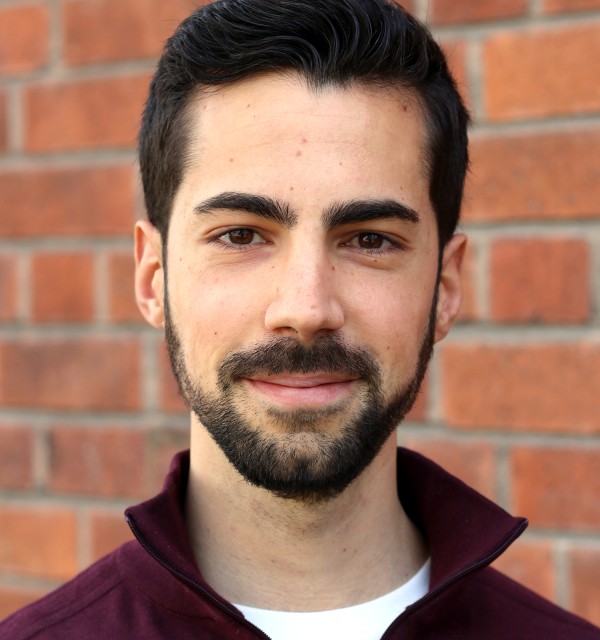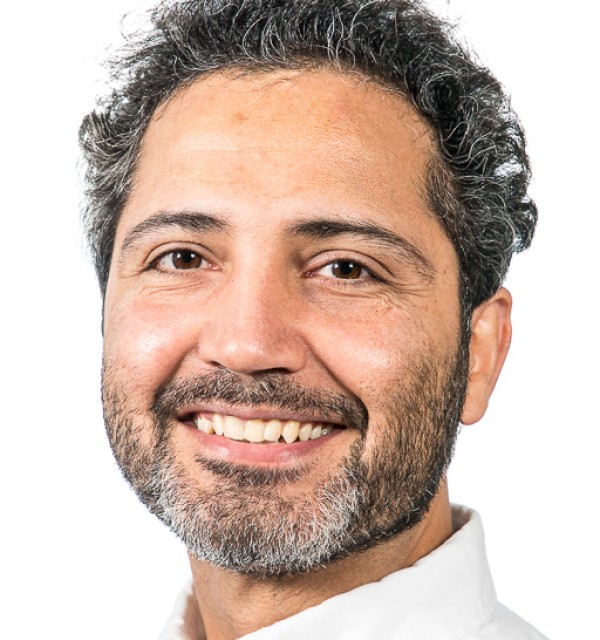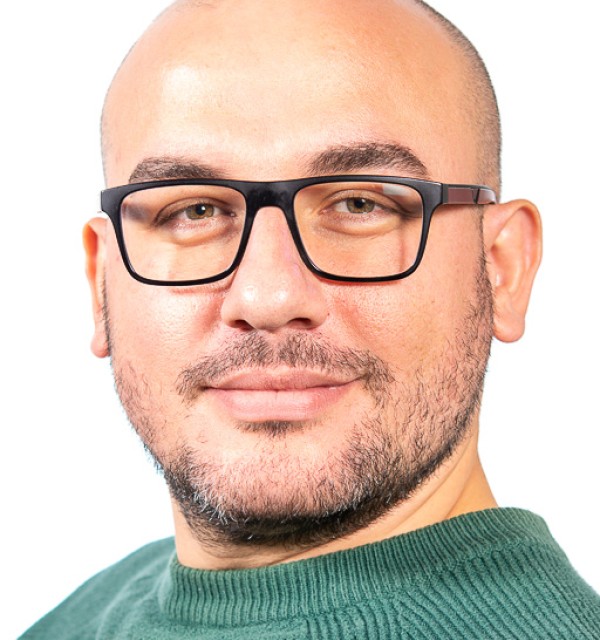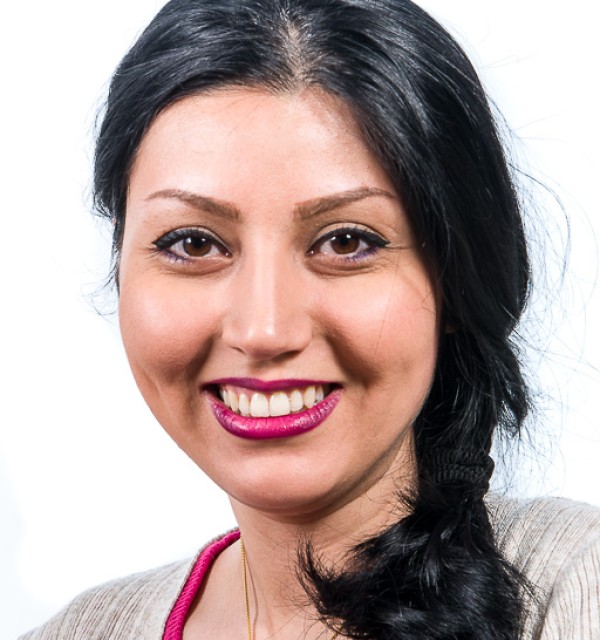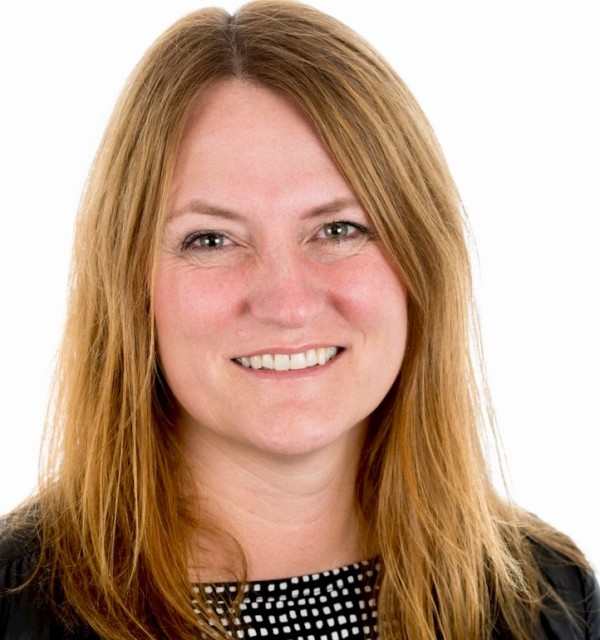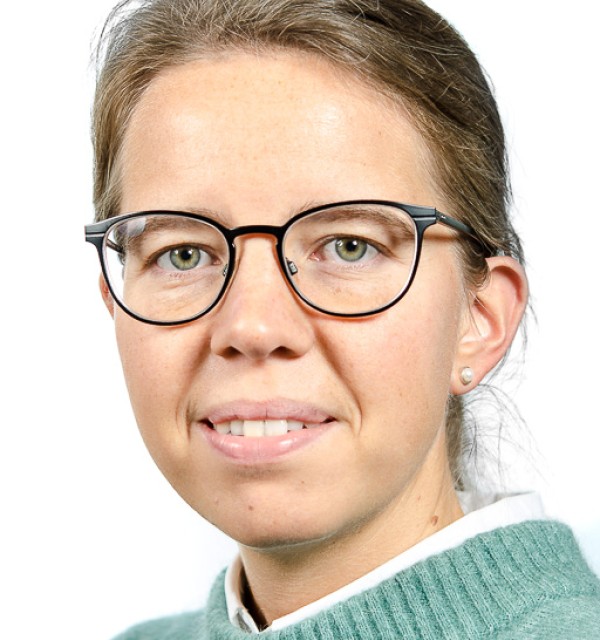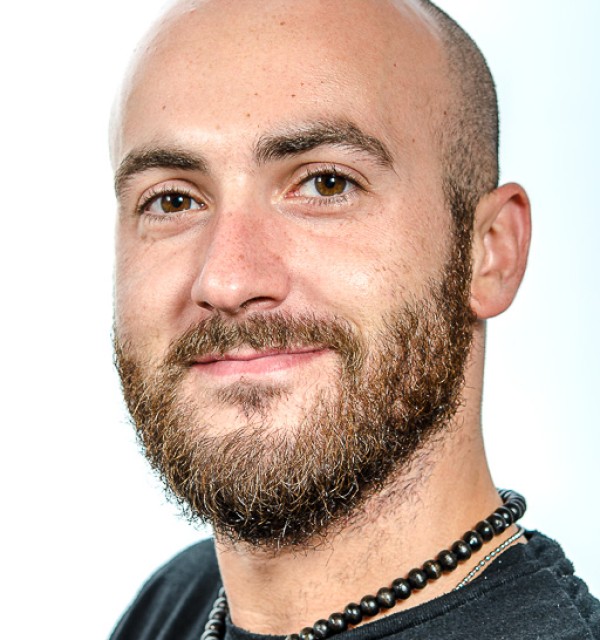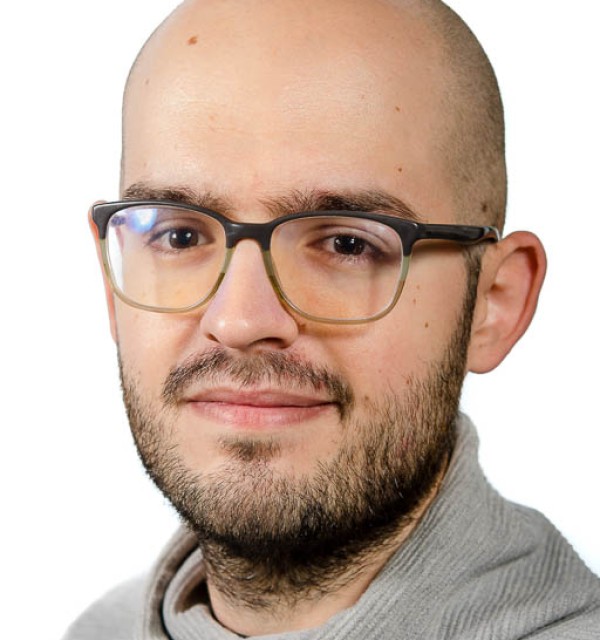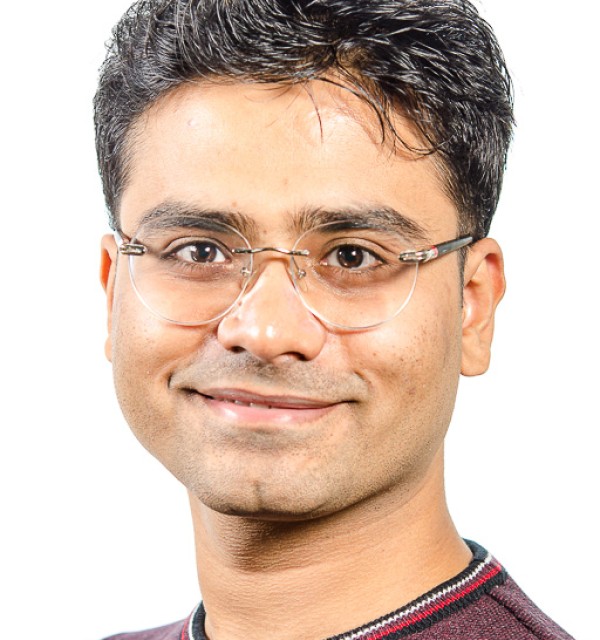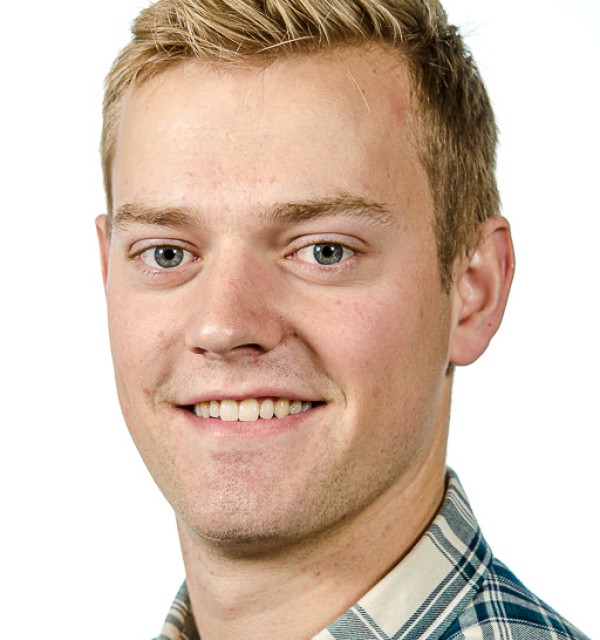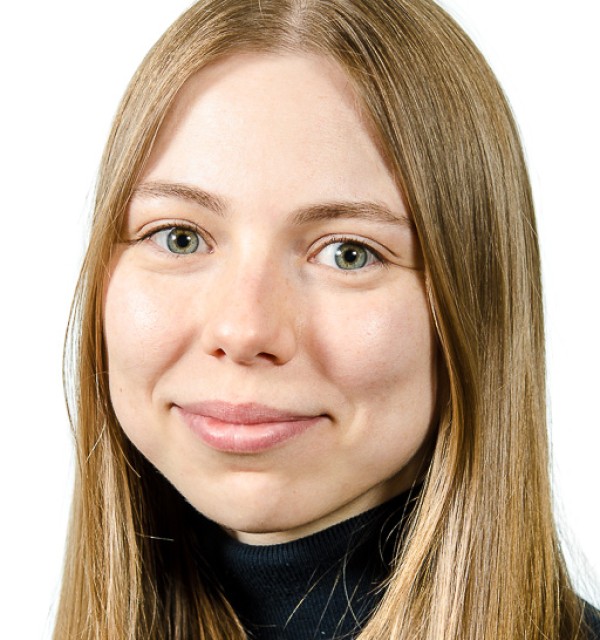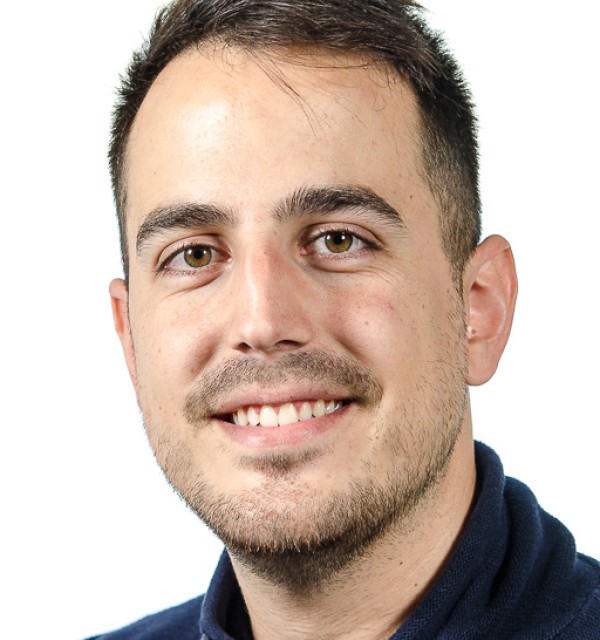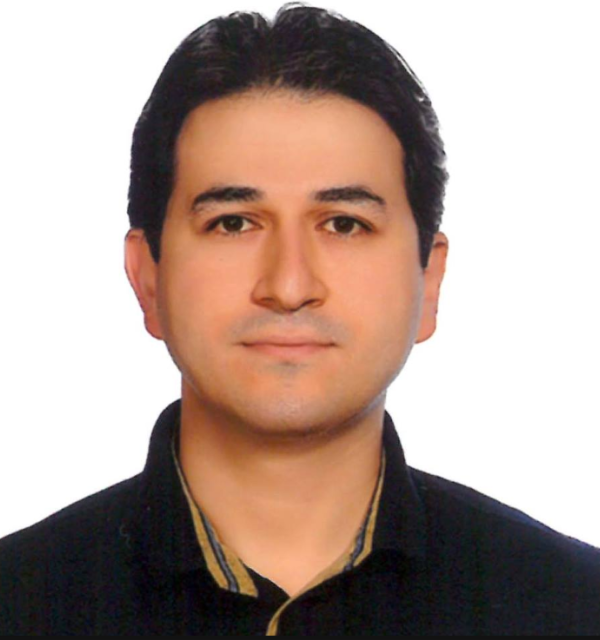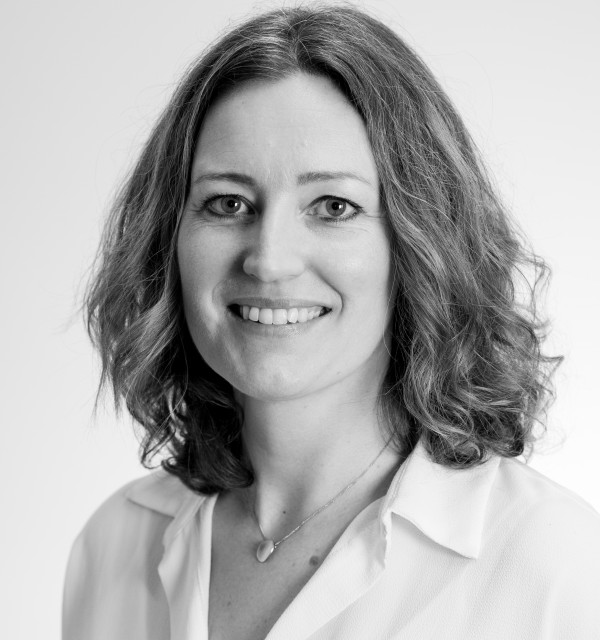At BMDLab we deal with biomedical data analysis and medical applications. We employ signal- and image processing, machine learning, artificial intelligence and statistical analysis.
29
22
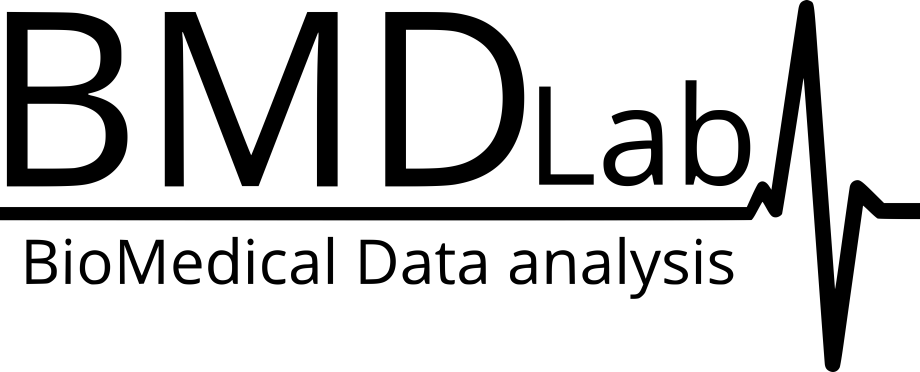
BMDLab is led by the Department of Electrical Engineering and Computer Science, at the Faculty of Science and Technology at University of Stavanger.
Projects in biomedicine being multidisciplinary, BMDLab also consists of members from other departments and faculties at UiS, as well as external members from hospitals and industry.
The primary focus of the BMD Lab is to provide pioneering solutions to data analysis challenges related to the health care sector.
We pursue the development and integration of innovative approaches at various steps, like acquisition, analysis, and interpretation.
The group's research projects fall into the following categories:
- Microscopic images and digital pathology
- Newborn survival
- Cardiology and resuscitation
- Brain and neuroscience
- Cancer
- Activity recognition
BMDLab is part of the university's initiative on artificial intelligence - Stavanger AI Lab.
AI in digital pathology
At BMDLab we look at digitally scanned Whole slide images (WSI) in different sub-projects. Much of the data we work on is provided from the Department of Pathology, Stavanger University Hospital (SUS), but we also use publicly available sets and get data from other collaborators.
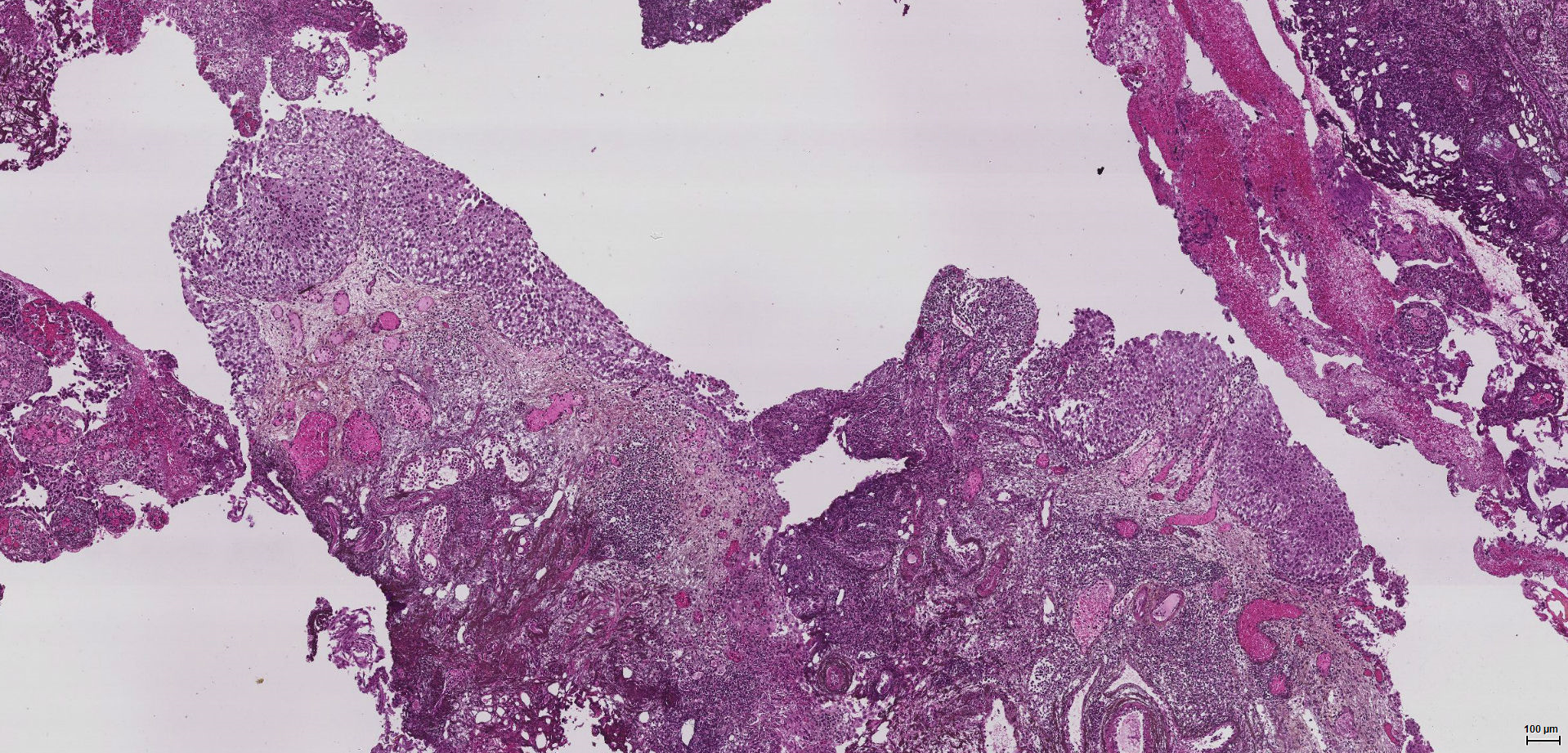
Past and ongoing subprojects have included tissue-type segmentation, diagnostic classification and prognostic prediction based on image processing and artificial intelligence.
Urinary bladder cancer
Urothelial TaT1 carcinoma, i.e. urinary bladder cancer, where a large population based dataset of patients with follow-up data on different prognoses and further development is available. Globally there has been an enormous increase in bladder cancer incidents the past decades, with the number of deaths increased by 49 per cent from 1990 to 2010. Correct prognosis of recurrence and progression is essential to avoid under- or over-treatment of the patient, as well as unnecessary suffering and cost. To diagnose the cancer grade and stage, pathologists study the histological images. However, this is a time-consuming process and reproducibility among pathologists are low.
In this project, a method for automatic classification of H&E stained whole slide images (WSI) into six different classes is proposed, where the classes are defined as; urothelium, stroma, muscle tissue, damaged tissue, blood and background. The method is based on convolutional neural networks (CNN). A second stager are using segmented areas for providing diagnosis classification.
Prostate cancer
Using a large population based database we will validate and implement an AI-algorithm for the automatic recognition of cancer vs. non-cancerous tissue in prostate biopsies in Helse-Vest. Also we will develop and test an AI-algorithm for the analyses of prostate cancer biopsies in order to establish the Gleason score and ultimately establish an individual risk of recurrence score for each patient. Furthermore an AI-algorithm for the automated identification of high grade prostatic intraepithelial neoplasia, a lesion considered the most likely precursor of prostatic carcinoma, will be developed and tested.
Melanoma of the skin
The cancer type with the largest increase in incidence during the last decade, the incidence of skin melanoma in Rogaland is currently amongst the highest in the world. Goal for this project is to develop a Computer-aided Diagnostic (CAD) system for whole slide images that will help pathology departments to diagnose malignant melanoma more efficiently, by (1) reducing examination time, (2) reducing diagnostic variations and (3) increase diagnostic accuracy. At SUS have 65.000 biopsies available, one of the largest databases of its kind in the world.
Funding: Helse Vest
Triple Negative Breast cancer
This is the type of breast cancer with the worse survival due its heterogeneity which causes difficulty to treat the disease. In this project (part of CLARIFY) we will study, by image analysis, histopathological patterns and features of Triple negative breast cancer, together with immunohistochemical, genetic and clinical information, in order to improve the reproducibility and prognostic value of the pathology diagnosis and classification for this subgroup of breast cancers with the worst prognostic outcome.
Researchers taking part from BMDLab: Trygve Eftestøl, Emiel Janssen, Kjersti Engan, Rune Wetteland (past), Anders Blilie, Vebjørn Kvikstad and Erlend Tøssebro, Neel Kanwal, Saul Fuster Navarro.
Publications
Andreassen, Christopher, Saul Fuster, Helga Hardardottir, Emiel A.M. Janssen, and Kjersti Engan. 2023. “Deep Learning for Predicting Metastasis on Melanoma Wsis.” In 2023 IEEE 20th International Symposium on Biomedical Imaging (ISBI), 1–5. Cartagena, Colombia: IEEE. https://doi.org/10.1109/ISBI53787.2023.10230474.
Bø-Sande, Marie, Edvin Benjaminsen, Neel Kanwal, Saul Fuster, Helga Hardardottir, Ingrid Lundal, Emiel A. M. Janssen, and Kjersti Engan. 2023. “A Dual Convolutional Neural Network Pipeline for Melanoma Diagnostics and Prognostics.” https://doi.org/10.48550/ARXIV.2312.08766.
Kanwal, Neel, Roger Amundsen, Helga Hardardottir, Luca Tomasetti, Erling Sand¢y Undersrud, Emiel A.M. Janssen, and Kjersti Engan. 2023. “Detection and Localization of Melanoma Skin Cancer in Histopathological Whole Slide Images.” In 2023 31st European Signal Processing Conference (EUSIPCO), 975–79. Helsinki, Finland: IEEE. https://doi.org/10.23919/EUSIPCO58844.2023.10290087.
hAIst Conference: Health-Related Artificial Intelligence in Stavanger. 2022. Vol. 40. Papers from UiS. University of Stavanger. https://doi.org/10.31265/usps.195.
Wetteland, Rune, Kjersti Engan, and Trygve Eftesol. 2021. “Parameterized Extraction of Tiles in Multilevel Gigapixel Images.” In 2021 12th International Symposium on Image and Signal Processing and Analysis (ISPA), 78–83. Zagreb, Croatia: IEEE. https://doi.org/10.1109/ISPA52656.2021.9552104.
Wetteland, Rune, Kjersti Engan, Trygve Eftestøl, Vebjørn Kvikstad, and Emiel A. M. Janssen. 2020. “A Multiscale Approach for Whole-Slide Image Segmentation of Five Tissue Classes in Urothelial Carcinoma Slides.” Technology in Cancer Research & Treatment 19 (January): 153303382094678. https://doi.org/10.1177/1533033820946787.
Wetteland, Rune, Vebjorn Kvikstad, Trygve Eftestol, Erlend Tossebro, Melinda Lillesand, Emiel A. M. Janssen, and Kjersti Engan. 2021. “Automatic Diagnostic Tool for Predicting Cancer Grade in Bladder Cancer Patients Using Deep Learning.” IEEE Access 9: 115813–25. https://doi.org/10.1109/ACCESS.2021.3104724.
Cloud artificial intelligence for pathology (CLARIFY)
CLARIFY is a project funded by the European Union’s Horizon 2020 research and innovation programme under the Marie Skłodowska-Curie Innovative Training Networks.
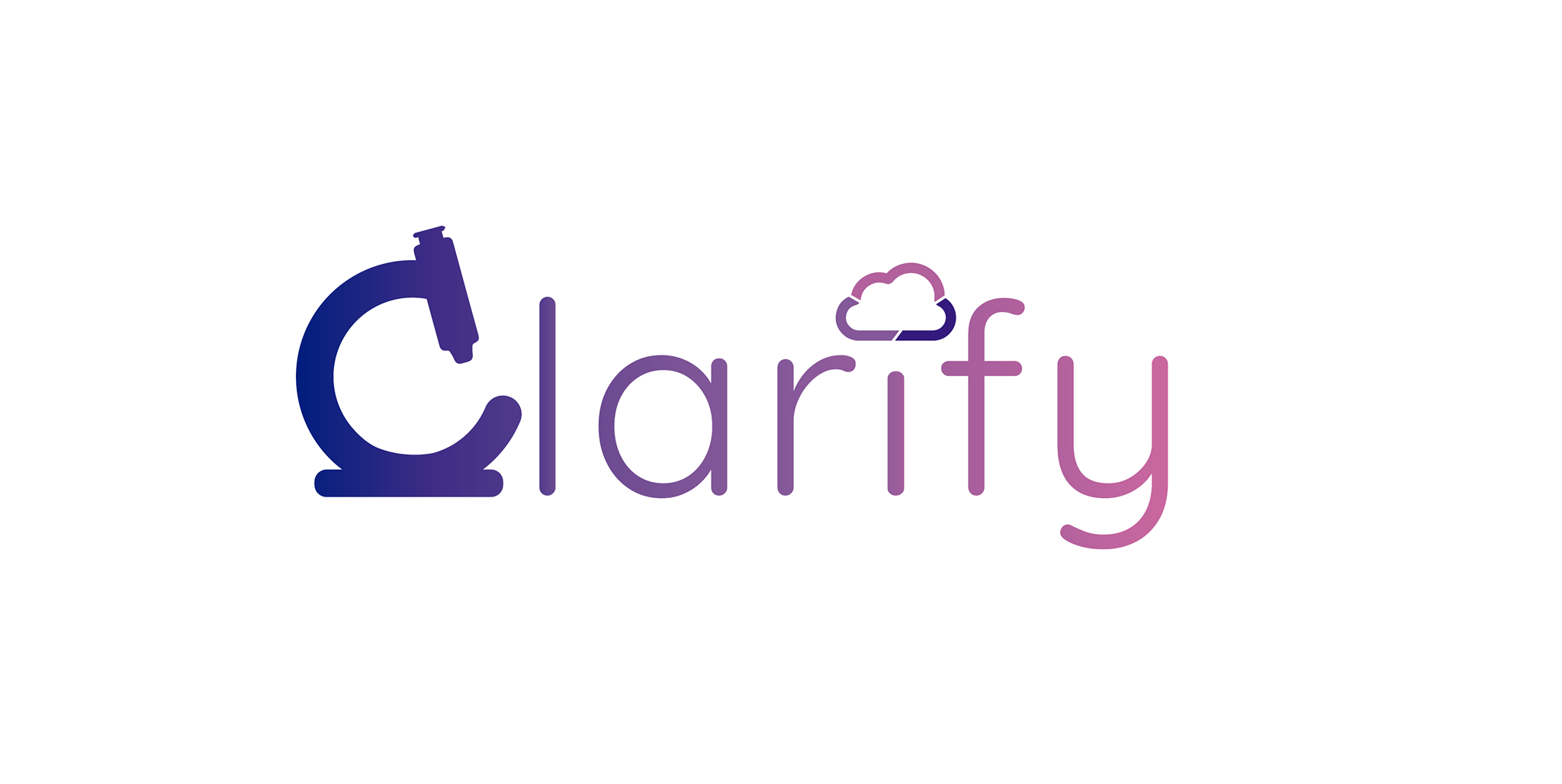
LARIFY is an innovative, multinational, multi-sectorial, and multidisciplinary research and training programme that links engineering and medicine. The aim is to integrate artificial intelligence (AI), cloud computing and clinical pathology with the focus on digital pathology.
BMDLab hosts two Early Stage Researchers (ESRs), namely Saul Fuster Navarro and Neel Kanwal.
Saul Fuster Navarros work focuses on the development of algorithms and systems to extract diagnostically relevant information from histological whole slide images (WSI) of non-muscle invasive bladder cancer (NMIBC). He has developed clinical decision support AI models for improved diagnosis and prognosis of bladder cancer patients.
Neel Kanwals work deals with the anonymization, preprocessing and segmentation of histopathological WSI. He has developed AI models for detection and removal of different types of artifacts present in WSI.
Local (Stavanger based) partners are UiS (BMDLab), bitYoga and Stavanger University Hospital.
From BMDLab: Kjersti Engan, Trygve Eftestøl, Emiel Janssen, Saul Fuster Navarro, Neel Kanwal.
More information on the Clarify project website.
Publications
Fuster, Saul, Trygve Eftestøl, and Kjersti Engan. 2022a. “Nested Multiple Instance Learning with Attention Mechanisms.” In 2022 21st IEEE International Conference on Machine Learning and Applications (ICMLA), 220–25. Nassau, Bahamas: IEEE. https://doi.org/10.1109/ICMLA55696.2022.00038.
Fuster, Saul, Farbod Khoraminia, Trygve Eftestøl, Tahlita C.M. Zuiverloon, and Kjersti Engan. 2023a. “Active Learning Based Domain Adaptation for Tissue Segmentation of Histopathological Images.” In 2023 31st European Signal Processing Conference (EUSIPCO), 1045–49. Helsinki, Finland: IEEE. https://doi.org/10.23919/EUSIPCO58844.2023.10290058.
Fuster, Saul, Farbod Khoraminia, Umay Kiraz, Neel Kanwal, Vebjorn Kvikstad, Trygve Eftestol, Tahlita C.M. Zuiverloon, Emiel A.M. Janssen, and Kjersti Engan. 2022a. “Invasive Cancerous Area Detection in Non-Muscle Invasive Bladder Cancer Whole Slide Images.” In 2022 IEEE 14th Image, Video, and Multidimensional Signal Processing Workshop (IVMSP), 1–5. Nafplio, Greece: IEEE. https://doi.org/10.1109/IVMSP54334.2022.9816352.
Geng, Jiahui, Neel Kanwal, Martin Gilje Jaatun, and Chunming Rong. 2021. “DID-eFed: Facilitating Federated Learning as a Service with Decentralized Identities.” In Evaluation and Assessment in Software Engineering, 329–35. Trondheim Norway: ACM. https://doi.org/10.1145/3463274.3463352.
hAIst Conference: Health-Related Artificial Intelligence in Stavanger. 2022. Vol. 40. Papers from UiS. University of Stavanger. https://doi.org/10.31265/usps.195.
Kanwal, Neel, Trygve Eftestøl, Farbod Khoraminia, Tahlita C. M. Zuiverloon, and Kjersti Engan. 2023. “Vision Transformers for Small Histological Datasets Learned Through Knowledge Distillation.” In Advances in Knowledge Discovery and Data Mining, edited by Hisashi Kashima, Tsuyoshi Ide, and Wen-Chih Peng, 13937:167–79. Lecture Notes in Computer Science. Cham: Springer Nature Switzerland. https://doi.org/10.1007/978-3-031-33380-4_13.
Kanwal, Neel, and Kjersti Engan. 2024. “Extract, Detect, Eliminate: Enhancing Reliability and Performance of Computational Pathology through Artifact Processing Pipelines.” Science Talks 9 (March): 100305. https://doi.org/10.1016/j.sctalk.2024.100305.
Kanwal, Neel, Saul Fuster, Farbod Khoraminia, Tahlita C.M. Zuiverloon, Chunming Rong, and Kjersti Engan. 2022. “Quantifying the Effect of Color Processing on Blood and Damaged Tissue Detection in Whole Slide Images.” In 2022 IEEE 14th Image, Video, and Multidimensional Signal Processing Workshop (IVMSP), 1–5. Nafplio, Greece: IEEE. https://doi.org/10.1109/IVMSP54334.2022.9816283.
Kanwal, Neel, Emiel A. M. Janssen, and Kjersti Engan, 2024. “Balancing Privacy and Progress in Artificial Intelligence: Anonymization in Histopathology for Biomedical Research and Education.” In Frontiers of Artificial Intelligence, Ethics, and Multidisciplinary Applications, 417–29. Frontiers of Artificial Intelligence, Ethics and Multidisciplinary Applications. Singapore: Springer Nature Singapore. https://doi.org/10.1007/978-981-99-9836-4_31.
Kanwal, Neel, Miguel López-Pérez, Umay Kiraz, Tahlita C.M. Zuiverloon, Rafael Molina, and Kjersti Engan. 2024. “Are You Sure It’s an Artifact? Artifact Detection and Uncertainty Quantification in Histological Images.” Computerized Medical Imaging and Graphics 112 (March): 102321. https://doi.org/10.1016/j.compmedimag.2023.102321.
Kanwal, Neel, Fernando Perez-Bueno, Arne Schmidt, Kjersti Engan, and Rafael Molina. 2022. “The Devil Is in the Details: Whole Slide Image Acquisition and Processing for Artifacts Detection, Color Variation, and Data Augmentation: A Review.” IEEE Access 10: 58821–44. https://doi.org/10.1109/ACCESS.2022.3176091.
Khoraminia, Farbod, Saul Fuster, Neel Kanwal, Mitchell Olislagers, Kjersti Engan, Geert J. L. H. Van Leenders, Andrew P. Stubbs, Farhan Akram, and Tahlita C. M. Zuiverloon. 2023. “Artificial Intelligence in Digital Pathology for Bladder Cancer: Hype or Hope? A Systematic Review.” Cancers 15 (18): 4518. https://doi.org/10.3390/cancers15184518.
Morales, Sandra, Kjersti Engan, and Valery Naranjo. 2021. “Artificial Intelligence in Computational Pathology – Challenges and Future Directions.” Digital Signal Processing 119 (December): 103196. https://doi.org/10.1016/j.dsp.2021.103196.
Pérez-Bueno, Fernando, Kjersti Engan, and Rafael Molina. 2023. “A Robust BKSVD Method for Blind Color Deconvolution and Blood Detection on H &E Histological Images.” In Artificial Intelligence in Medicine, edited by Jose M. Juarez, Mar Marcos, Gregor Stiglic, and Allan Tucker, 13897:207–17. Lecture Notes in Computer Science. Cham: Springer Nature Switzerland. https://doi.org/10.1007/978-3-031-34344-5_25.
Tabatabaei, Zahra, Adrian Colomer, Kjersti Engan, Javier Oliver, and Valery Naranjo. 2022. “Residual Block Convolutional Auto Encoder in Content-Based Medical Image Retrieval.” In 2022 IEEE 14th Image, Video, and Multidimensional Signal Processing Workshop (IVMSP), 1–5. Nafplio, Greece: IEEE. https://doi.org/10.1109/IVMSP54334.2022.9816325.
Tabatabaei, Zahra, Adrián Colomer, Kjersti Engan, Javier Oliver, and Valery Naranjo. 2023. “Self-Supervised Learning of a Tailored Convolutional Auto Encoder for Histopathological Prostate Grading.” In 2023 31st European Signal Processing Conference (EUSIPCO), 980–84. Helsinki, Finland: IEEE. https://doi.org/10.23919/EUSIPCO58844.2023.10289741.
Wang, Yuandou, Neel Kanwal, Kjersti Engan, Chunming Rong, and Zhiming Zhao. 2023. “Towards a Privacy-Preserving Distributed Cloud Service for Preprocessing Very Large Medical Images.” In 2023 IEEE International Conference on Digital Health (ICDH), 325–27. Chicago, IL, USA: IEEE. https://doi.org/10.1109/ICDH60066.2023.00055.
Patologi i Vest (PiV) – pathology in West
Pathology services in the Western Norway Health Region is a joint project of Helse Bergen and Helse Stavanger with participation of the universities of Stavanger and Bergen as well as the Western University of Applied Sciences.
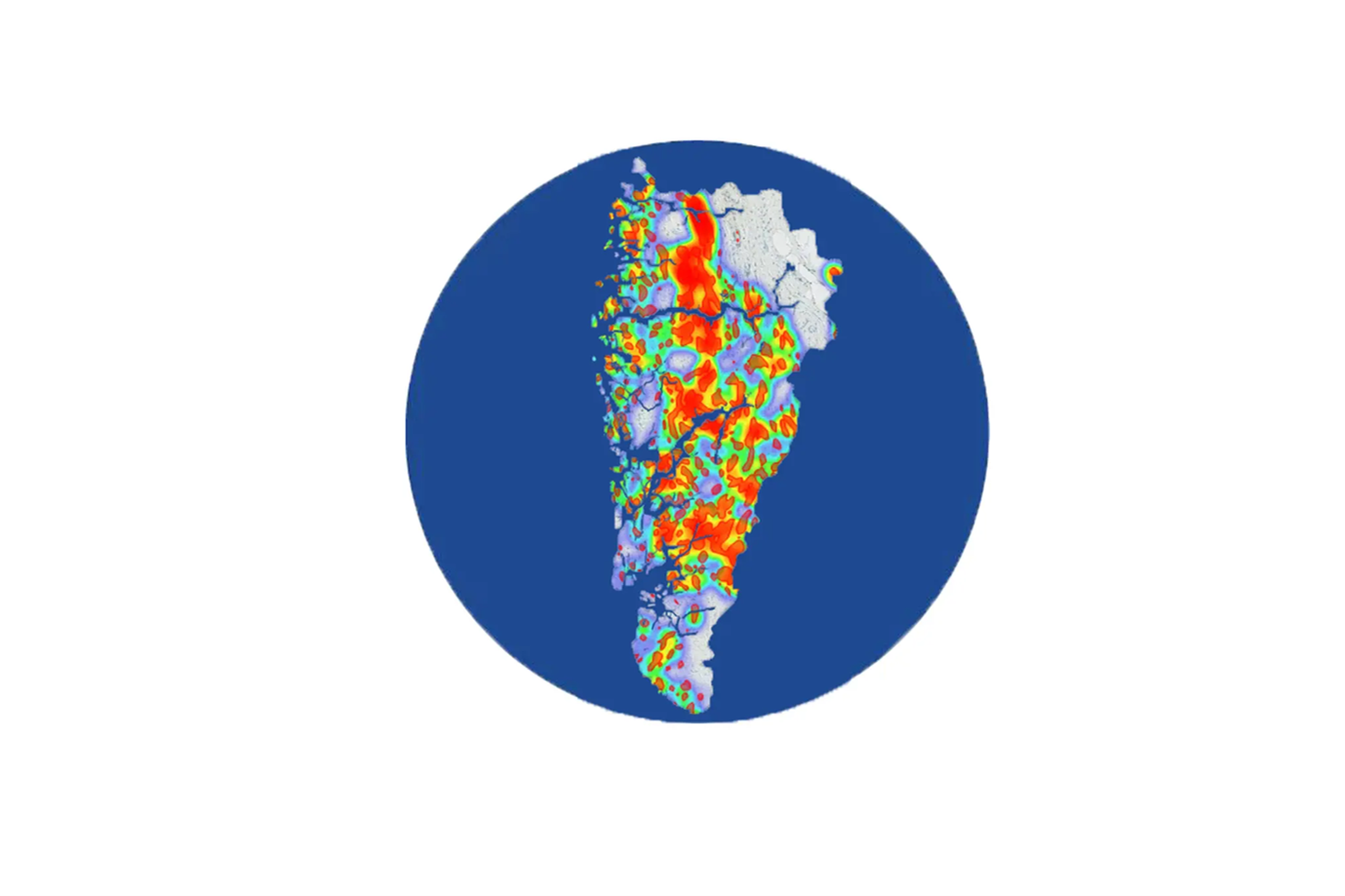
BMDLab is a partner in the PiV project, with Prof. Emiel Janssen and prof. Kjersti Engan
Read more: https://www.helse-bergen.no/piv
Publications
Andreassen, Christopher, Saul Fuster, Helga Hardardottir, Emiel A.M. Janssen, and Kjersti Engan. 2023. “Deep Learning for Predicting Metastasis on Melanoma Wsis.” In 2023 IEEE 20th International Symposium on Biomedical Imaging (ISBI), 1–5. Cartagena, Colombia: IEEE. https://doi.org/10.1109/ISBI53787.2023.10230474.
Bø-Sande, Marie, Edvin Benjaminsen, Neel Kanwal, Saul Fuster, Helga Hardardottir, Ingrid Lundal, Emiel A. M. Janssen, and Kjersti Engan. 2023. “A Dual Convolutional Neural Network Pipeline for Melanoma Diagnostics and Prognostics.” https://doi.org/10.48550/ARXIV.2312.08766.
Kanwal, Neel, Roger Amundsen, Helga Hardardottir, Luca Tomasetti, Erling Sand¢y Undersrud, Emiel A.M. Janssen, and Kjersti Engan. 2023. “Detection and Localization of Melanoma Skin Cancer in Histopathological Whole Slide Images.” In 2023 31st European Signal Processing Conference (EUSIPCO), 975–79. Helsinki, Finland: IEEE. https://doi.org/10.23919/EUSIPCO58844.2023.10290087.
Safer Births
Safer Births is a research and development collaboration to increase newborn survival by establishing new evidence, gaining new knowledge and developing innovative products to better equip and increase competence of health workers.
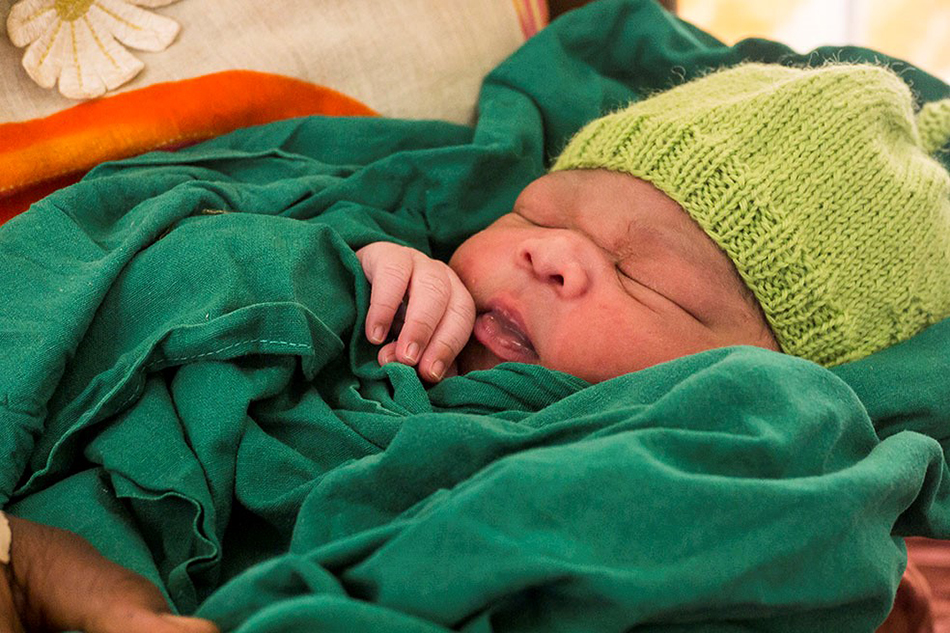
The Safer Births collaboration started in 2013 and involves many partners. Full information on the Safer Births website (external link).
Stillbirths are a worldwide challenge, with an estimated 2.6 million stillbirths in 2015, of these 1.3 million are estimated to have died during labour and birth, i.e. fresh stillbirth. In addition, one million newborns die within their first and only day of life. Birth asphyxia is the primary cause of these very early deaths. Birth asphyxia can also cause cerebral palsy and long term damage.
Within this project, observational and signal data describing labours and the newborn have been collected from the first FHR assessment on admission until 24 hours after the time of birth at partner hospitals in Tanzania.
The work by BMDlab in the Safer Births project has led to NewbornTime and Liveborn Station project. Safer Births have also been continued in different projects – Safer Births scale-up (Bundle of Care) and Safer Births Norway.
Taking part from BMDLab: Hege Ersdal, Helge Myklebust, Trygve Eftestøl, Kjersti Engan, Jörn Schulz, Jan Terje Kvaløy, Øyvind Meinich-Bache, Siren Irene Rettedal, . PhD students from BMDLab (all finished): Huyen Vu, Øyvind Meinich-Bache, Jarle Urdal.
Collaborators: See information at http://www.saferbirths.com
Publications
Ersdal, Hege, Paschal Mdoe, Estomih Mduma, Robert Moshiro, Godfrey Guga, Jan Terje Kvaløy, Felix Bundala, Boniphace Marwa, and Benjamin Kamala. 2023. “‘Safer Births Bundle of Care’ Implementation and Perinatal Impact at 30 Hospitals in Tanzania—Halfway Evaluation.” Children 10 (2): 255. https://doi.org/10.3390/children10020255.
Mduma, Estomih R, Hege Ersdal, Jan Terje Kvaloy, Erling Svensen, Paschal Mdoe, Jeffrey Perlman, Hussein Lessio Kidanto, and Eldar Soreide. 2018. “Using Statistical Process Control Methods to Trace Small Changes in Perinatal Mortality after a Training Program in a Low-Resource Setting.” International Journal for Quality in Health Care 30 (4): 271–75. https://doi.org/10.1093/intqhc/mzy003.
Moshiro, Robert, Jeffrey M. Perlman, Hussein Kidanto, Jan Terje Kvaløy, Paschal Mdoe, and Hege L. Ersdal. 2018. “Predictors of Death Including Quality of Positive Pressure Ventilation during Newborn Resuscitation and the Relationship to Outcome at Seven Days in a Rural Tanzanian Hospital.” Edited by James West. PLOS ONE 13 (8): e0202641. https://doi.org/10.1371/journal.pone.0202641.
Moshiro, Robert, Jeffrey M. Perlman, Paschal Mdoe, Hussein Kidanto, Jan Terje Kvaløy, and Hege L. Ersdal. 2019. “Potential Causes of Early Death among Admitted Newborns in a Rural Tanzanian Hospital.” Edited by Kahabi Ganka Isangula. PLOS ONE 14 (10): e0222935. https://doi.org/10.1371/journal.pone.0222935.
Schulz, Jörn, Jan Terje Kvaløy, Kjersti Engan, Trygve Eftestøl, Samwel Jatosh, Hussein Kidanto, and Hege Ersdal. 2020. “State Transition Modeling of Complex Monitored Health Data.” Journal of Applied Statistics 47 (11): 1915–35. https://doi.org/10.1080/02664763.2019.1698523.
Tveit, Daniel Myklatun, Kjersti Engan, Ivar Austvoll, and Oyvind Meinich-Bache. 2016. “Motion Based Detection of Respiration Rate in Infants Using Video.” In 2016 IEEE International Conference on Image Processing (ICIP), 1225–29. Phoenix, AZ, USA: IEEE. https://doi.org/10.1109/ICIP.2016.7532553.
Urdal, Jarle, Kjersti Engan, Trygve Eftestøl, Solveig H. Haaland, Benjamin Kamala, Paschal Mdoe, Hussein Kidanto, and Hege Ersdal. 2021. “Fetal Heart Rate Development during Labour.” BioMedical Engineering OnLine 20 (1): 26. https://doi.org/10.1186/s12938-021-00861-z.
Urdal, Jarle, Kjersti Engan, Trygve Eftestol, Hussein Kidanto, Ladislaus Blacy Yarrot, Joar Eilevstjonn, and Hege Ersdal. 2017. “Signal Processing and Classification for Identification of Clinically Important Parameters during Neonatal Resuscitation.” In 2017 IEEE International Conference on Signal and Image Processing Applications (ICSIPA), 547–52. Kuching: IEEE. https://doi.org/10.1109/ICSIPA.2017.8120672.
Urdal, Jarle, Kjersti Engan, Trygve Eftestøl, Øyvind Meinich-Bache, Ingunn Anda Haug, Paschal Francis Mdoe, Esto Mduma, Ladislaus Blacy Yarrot, Hussein Kidanto, and Hege Ersdal. 2023. “Automatic Prediction of Therapeutic Activities during Newborn Resuscitation Combining Video and Signal Data.” Biomedical Signal Processing and Control 86 (September): 105290. https://doi.org/10.1016/j.bspc.2023.105290.
Urdal, Jarle, Kjersti Engan, Trygve Eftestøl, Valery Naranjo, Ingunn Anda Haug, Anita Yeconia, Hussein Kidanto, and Hege Ersdal. 2020. “Automatic Identification of Stimulation Activities during Newborn Resuscitation Using ECG and Accelerometer Signals.” Computer Methods and Programs in Biomedicine 193 (September): 105445. https://doi.org/10.1016/j.cmpb.2020.105445.
Vadla, May Sissel, Paschal Mdoe, Robert Moshiro, Ingunn Anda Haug, Øystein Gomo, Jan Terje Kvaløy, Bjørg Oftedal, and Hege Ersdal. 2022. “Neonatal Resuscitation Skill-Training Using a New Neonatal Simulator, Facilitated by Local Motivators: Two-Year Prospective Observational Study of 9000 Trainings.” Children 9 (2): 134. https://doi.org/10.3390/children9020134.
Vadla, May Sissel, Estomih Raphael Mduma, Jan Terje Kvaløy, Paschal Mdoe, Barikiel Hhando Hhoki, Sabrina Sarangu, Paskalina Michael, Bjørg Oftedal, and Hege Ersdal. 2023. “Increase in Newborns Ventilated Within the First Minute of Life and Reduced Mortality After Clinical Data-Guided Simulation Training.” Simulation in Healthcare: The Journal of the Society for Simulation in Healthcare, July. https://doi.org/10.1097/SIH.0000000000000740.
Vadla, May Sissel, Robert Moshiro, Paschal Mdoe, Joar Eilevstjønn, Jan Terje Kvaløy, Barikiel Hhando Hhoki, and Hege Ersdal. 2022. “Newborn Resuscitation Simulation Training and Changes in Clinical Performance and Perinatal Outcomes: A Clinical Observational Study of 10,481 Births.” Advances in Simulation 7 (1): 38. https://doi.org/10.1186/s41077-022-00234-z.
Vossius, Corinna, Estomih Mduma, Robert Moshiro, Paschal Mdoe, Jan Terje Kvaløy, Hussein Kidanto, Sara Lyanga, and Hege Ersdal. 2021. “The Impact of Introducing Ambulance and Delivery Fees in a Rural Hospital in Tanzania.” BMC Health Services Research 21 (1): 99. https://doi.org/10.1186/s12913-021-06107-x.
Vu, Huyen, Trygve Eftestøl, Kjersti Engan, Joar Eilevstjønn, Jørgen E. Linde, and Hege Ersdal. 2015. “Exploratory Analysis of Ventilation Signals from Resuscitation Data of Newborns:” In Proceedings of the International Conference on Bio-Inspired Systems and Signal Processing, 12–20. Lisbon, Portugal: SCITEPRESS - Science and and Technology Publications. https://doi.org/10.5220/0005176800120020.
Vu, Huyen, Trygve Eftestøl, Kjersti Engan, Joar Eilevstjønn, Ladislaus Blacy Yarrot, Jørgen E. Linde, and Hege Ersdal. 2015. “Exploring the Relationship Between Characteristics of Ventilation Performance and Response of Newborns During Resuscitation.” In Biomedical Engineering Systems and Technologies, edited by Ana Fred, Hugo Gamboa, and Dirk Elias, 574:275–90. Communications in Computer and Information Science. Cham: Springer International Publishing. https://doi.org/10.1007/978-3-319-27707-3_17.
Vu, Huyen, Trygve Eftestøl, Kjersti Engan, Joar Eilevstjønn, Ladislaus Blacy Yarrot, Jørgen E. Linde, and Hege Ersdal. 2016. “Detection of Activities During Newborn Resuscitation Based on Short-Time Energy of Acceleration Signal.” In Image and Signal Processing, edited by Alamin Mansouri, Fathallah Nouboud, Alain Chalifour, Driss Mammass, Jean Meunier, and Abderrahim Elmoataz, 9680:262–70. Lecture Notes in Computer Science. Cham: Springer International Publishing. https://doi.org/10.1007/978-3-319-33618-3_27.
Vu, Huyen, Trygve Eftestol, Kjersti Engan, Joar Eilevstjonn, Ladislaus Blacy Yarrot, Jorgen E. Linde, and Hege Langli Ersdal. 2017a. “Automatic Detection and Parameterization of Manual Bag-Mask Ventilation on Newborns.” IEEE Journal of Biomedical and Health Informatics 21 (2): 527–38. https://doi.org/10.1109/JBHI.2016.2518238.
Vu, Huyen, Trygve Eftestol, Kjersti Engan, Joar Eilevstjonn, Ladislaus Blacy Yarrot, Jorgen E. Linde, and Hege Langli Ersdal. 2017b. “Automatic Detection and Parameterization of Manual Bag-Mask Ventilation on Newborns.” IEEE Journal of Biomedical and Health Informatics 21 (2): 527–38. https://doi.org/10.1109/JBHI.2016.2518238.
Vu, Huyen, Kjersti Engan, Trygve Eftestøl, Aggelos Katsaggelos, Samwel Jatosh, Simeon Kusulla, Estomih Mduma, Hussein Kidanto, and Hege Ersdal. 2017. “Automatic Classification of Resuscitation Activities on Birth-Asphyxiated Newborns Using Acceleration and ECG Signals.” Biomedical Signal Processing and Control 36 (July): 20–26. https://doi.org/10.1016/j.bspc.2017.03.004.
Kibsgaard, Amalie, Hege Ersdal, Jan Terje Kvaløy, Joar Eilevstjønn, and Siren Rettedal. 2023. “Newborns Requiring Resuscitation: Two Thirds Have Heart Rate ≥100 Beats/Minute in the First Minute after Birth.” Acta Paediatrica 112 (4): 697–705. https://doi.org/10.1111/apa.16659.
Rettedal, Siren, Joar Eilevstjønn, Amalie Kibsgaard, Jan Terje Kvaløy, and Hege Ersdal. 2021. “Comparison of Heart Rate Feedback from Dry-Electrode ECG, 3-Lead ECG, and Pulse Oximetry during Newborn Resuscitation.” Children 8 (12): 1092. https://doi.org/10.3390/children8121092.
Rettedal, Siren, Amalie Kibsgaard, Joar Eilevstjønn, Jan Terje Kvaløy, Peder Aleksander Bjorland, Hanne Markhus Pike, Joanna Haynes, et al. 2022. “Impact of Immediate and Continuous Heart Rate Feedback by Dry Electrode ECG on Time to Initiation of Ventilation after Birth: Protocol for a Randomised Controlled Trial.” BMJ Open 12 (9): e061839. https://doi.org/10.1136/bmjopen-2022-061839.
Rettedal, Siren, Amalie Kibsgaard, Jan Terje Kvaløy, Joar Eilevstjønn, and Hege Langli Ersdal. 2023. “Prevalence of Bradycardia in 4876 Newborns in the First Minute after Birth and Association with Positive Pressure Ventilation: A Population-Based Cross-Sectional Study.” Archives of Disease in Childhood - Fetal and Neonatal Edition, November, fetalneonatal-2023-325878. https://doi.org/10.1136/archdischild-2023-325878.
AI for newborn survival
At BMDLab we are using signal and image processing and artificial intelligence on signals and video data collected during labor and during newborn resuscitation with the aim of increasing newborn survival and reducing long term damage.

Sub-projects at BMDLab:
Fetal heart rate analysis
Fetal heart rate (FHR) monitoring is a widely used method to assess the status of the fetus during pregnancy, labour, and birth. In high resource countries, continuous monitoring of the FHR is done using cardiotocography (CTG) for labours categorized as high risk. As CTG is not an alternative in low resource setting due to the cost, we use the Moyo fetal heart rate monitor within the Safer Birth to monitor the fetus during labour.
To extend the possibilities when using a continuous FHR monitors, such as Moyo, our group has proposed methods to detect noise, estimate missing data, and showed how contractions can be indicated using an accelerometer mounted in close proximity of the Doppler Ultrasound sensor. We have also explored how the FHR develops during labour based on the neonatal outcome.
Continued research on FHR signals acquired using Moyo has received funding from Fondation Idella.
From BMDLab: Neel Kanwal, Jarle Urdal (past), Kjersti Engan, Trygve Eftestøl, Hege Ersdal, Helge Myklebust ,
Funding at UiS: Fondation Idella
Data collection: Funded through the Safer births and Safer Haydom consortium.
Newborn resuscitation
In cases where the newborn is unable to start breathing, immediate intervention from the health care providers is required. The general guideline is to start the resuscitation within the first minute after birth, but a gap between the medical guidelines and what is performed has been observed.
To help increase the understanding of how the various resuscitation activities affect the resuscitation outcome, our group has proposed methods for automatically annotate resuscitation activities such as ventilation and stimulation.
Using ECG and movement of the newborn in combination with pressure, flow, and CO2 measurements from the bag-mask-resuscitator, we have proposed methods to automatically annotate when stimulation and ventilation is being performed. The data in this work has been acquired using the Laerdal newborn resuscitation monitor, a prototype of the NeoBeat.
In cases where a video of the resuscitation is available the possibilities for extracting information related to the resuscitation episode increases. Video allow us to capture events and activities performed by the health care providers (HCP) and by studying them together with Moyo and NeoBeat data we can get a more reliable and complete picture of the events before, during and after birth. Manual video annotations are both time consuming and entails privacy issues, thus we aim to create activity timelines automatically.
Development of automatic activity recognition from video using 3D Convolutional Neural Networks and Transformers networks has been carried out in both the original Safer Births project at Haydom, Tanzania and continued in the ongoing NewbornTime project.
Liveborn Station
Laerdal Medical have also developed a newborn resuscitation station for healthcare provider assistance called Liveborn Station. The station is suited for data collection and usage in low- and middle-income countries. The station collects synchronized signals from various sources, such as ECG, movement, video, audio, and the objective is to utilize these sources to provide real-time guidance and feedback to the healthcare providers performing the resuscitation. The status of the AI development is that we have developed a real-time solution for detection and feedback of bag-mask ventilations using ventilation sound recordings. The project collects data in Tanzania, DRC and Nepal using the Liveborn Station.
From BMDLab: Jorge Garcia-Torres Fernandez, Syed Tahir Hussain Rizvi, Øyvind Meinich-Bache, Hege Ersdal, Trygve Eftestøl, Kjersti Engan, Helge Myklebust. Sara Brunner
Partly funded by Laerdal Medical
Publications
Barzideh, Faraz, Jarle Urdal, Kidanto Hussein, Kjersti Engan, Karl Skretting, Paschal Mdoe, Benjamin Kamala, and Sara Brunner. 2018. “Estimation of Missing Data in Fetal Heart Rate Signals Using Shift-Invariant Dictionary.” In 2018 26th European Signal Processing Conference (EUSIPCO), 762–66. Rome: IEEE. https://doi.org/10.23919/EUSIPCO.2018.8553110.
Munyaw, Yuda, Jarle Urdal, Hege Ersdal, Matilda Ngarina, Robert Moshiro, Ladislaus Blacy, and Jorgen E. Linde. 2023. “Fetal to Neonatal Heart Rate Transition during Normal Vaginal Deliveries: A Prospective Observational Study.” Children 10 (4): 684. https://doi.org/10.3390/children10040684.
Urdal, Jarle, Kjersti Engan, Trygve Eftestøl, Solveig H. Haaland, Benjamin Kamala, Paschal Mdoe, Hussein Kidanto, and Hege Ersdal. 2021. “Fetal Heart Rate Development during Labour.” BioMedical Engineering OnLine 20 (1): 26. https://doi.org/10.1186/s12938-021-00861-z.
Urdal, Jarle, Kjersti Engan, Trygve Eftestøl, Ladislaus Blacy Yarrot, Hussein Kidanto, and Hege Ersdal. 2019. “Noise and Contraction Detection Using Fetal Heart Rate and Accelerometer Signals during Labour.” In Proceedings of the 17th Scandinavian Conference on Health Informatics, 12:13.
Meinich-Bache, Oyvind, Simon Lennart Austnes, Kjersti Engan, Ivar Austvoll, Trygve Eftestol, Helge Myklebust, Simeon Kusulla, Hussein Kidanto, and Hege Ersdal. 2020. “Activity Recognition From Newborn Resuscitation Videos.” IEEE Journal of Biomedical and Health Informatics 24 (11): 3258–67. https://doi.org/10.1109/JBHI.2020.2978252.
Meinich-Bache, Oyvind, Kjersti Engan, Ivar Austvoll, Trygve Eftestol, Helge Myklebust, Ladislaus Blacy Yarrot, Hussein Kidanto, and Hege Ersdal. 2020. “Object Detection During Newborn Resuscitation Activities.” IEEE Journal of Biomedical and Health Informatics 24 (3): 796–803. https://doi.org/10.1109/JBHI.2019.2924808.
Urdal, Jarle, Kjersti Engan, Trygve Eftestol, Hussein Kidanto, Ladislaus Blacy Yarrot, Joar Eilevstjonn, and Hege Ersdal. 2017. “Signal Processing and Classification for Identification of Clinically Important Parameters during Neonatal Resuscitation.” In 2017 IEEE International Conference on Signal and Image Processing Applications (ICSIPA), 547–52. Kuching: IEEE. https://doi.org/10.1109/ICSIPA.2017.8120672.
Urdal, Jarle, Kjersti Engan, Trygve Eftestøl, Øyvind Meinich-Bache, Ingunn Anda Haug, Paschal Francis Mdoe, Esto Mduma, Ladislaus Blacy Yarrot, Hussein Kidanto, and Hege Ersdal. 2023. “Automatic Prediction of Therapeutic Activities during Newborn Resuscitation Combining Video and Signal Data.” Biomedical Signal Processing and Control 86 (September): 105290. https://doi.org/10.1016/j.bspc.2023.105290.
Urdal, Jarle, Kjersti Engan, Trygve Eftestøl, Valery Naranjo, Ingunn Anda Haug, Anita Yeconia, Hussein Kidanto, and Hege Ersdal. 2020. “Automatic Identification of Stimulation Activities during Newborn Resuscitation Using ECG and Accelerometer Signals.” Computer Methods and Programs in Biomedicine 193 (September): 105445. https://doi.org/10.1016/j.cmpb.2020.105445.
Kc, Ashish, So Yeon Joyce Kong, Omkar Basnet, Solveig Haukås Haaland, Pratiksha Bhattarai, Øystein Gomo, Rejina Gurung, et al. 2022. “Usability, Acceptability and Feasibility of a Novel Technology with Visual Guidance with Video and Audio Recording during Newborn Resuscitation: A Pilot Study.” BMJ Health & Care Informatics Online 29 (1): e100667. https://doi.org/10.1136/bmjhci-2022-100667.
NewbornTime
The NewbornTime project is about improved newborn care by using artificial intelligence (AI) for activity and event recognition in video from the time during and after birth.
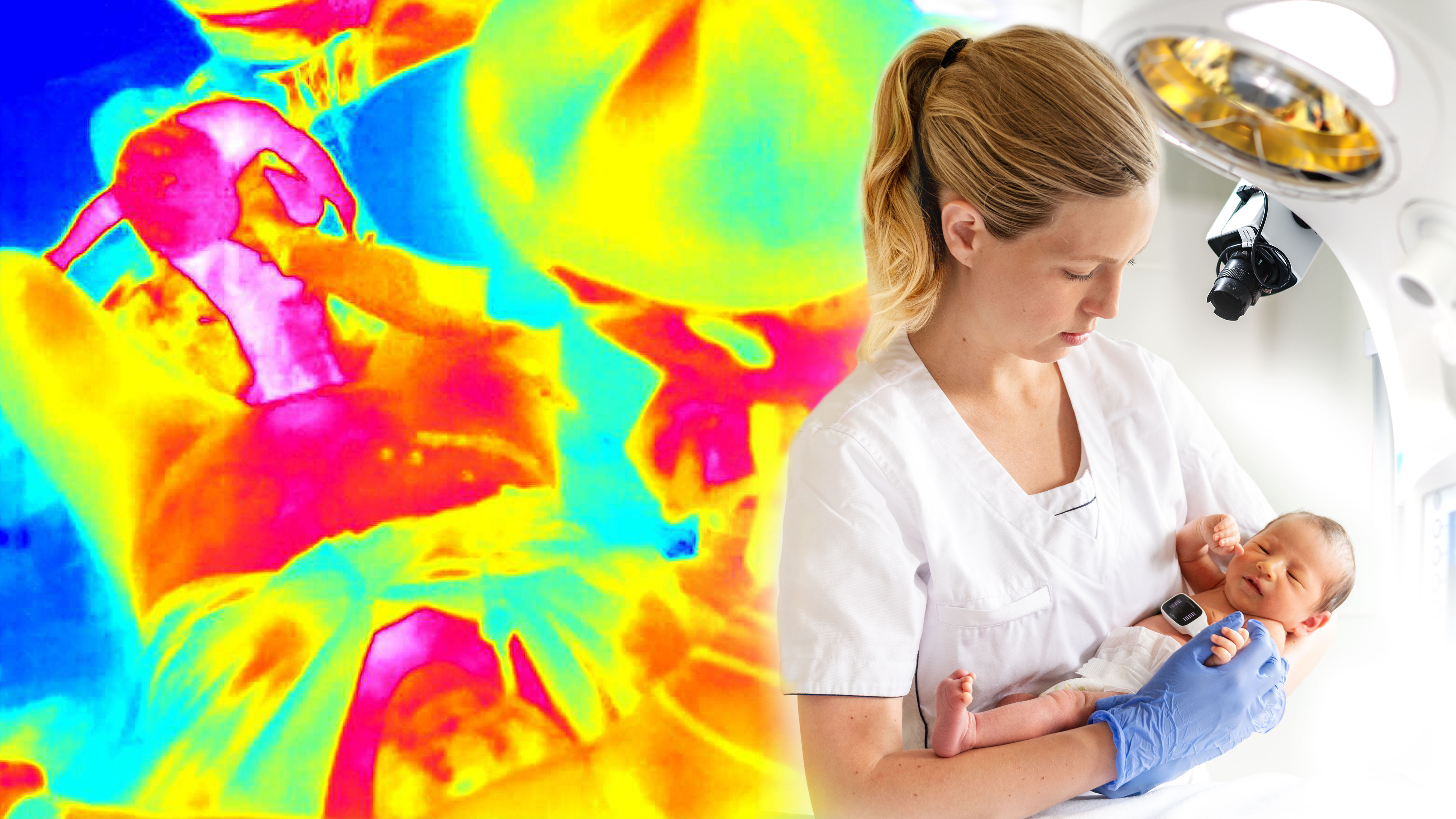
Deprivation of oxygen to an infant during and after birth might lead to birth asphyxia, one of the leading causes of newborn deaths, cerebral palsy and other long-term damage. According to guidelines, a newborn in need of help to start breathing should be resuscitated immediately after birth. Resuscitation activities include stimulating, clearing airways, and perform bag-mask-ventilation. In Norway, approximately 10% of term infants need stimulation and around 3% need bag-mask ventilation.
NewbornTime will produce a timeline describing events and activities performed on a newborn. Accurate time of birth will be detected using AI models from thermal videos collected in the delivery room. Activity recognition will be performed using AI in the form of deep convolutional neural networks (CNN) and Transformer architectures on thermal and RGB video from the resuscitation. The system will be designed to recognize multiple time-overlapping activities. Care will be given to make the AI models robust, reliable, general, and adaptive to be able to use it at different hospitals and settings. The timelines will be used to evaluate compliance to guidelines and identify successful resuscitation activity patterns. It can further be useful in a de-briefing and quality improvement tool.
The project is a collaboration between University of Stavanger (UiS), Stavanger University Hospital (SUS), Laerdal Medical and BitYoga. UiS, SUS and Laerdal has long experience in collaborative research on newborn care. They have documented promising results on detecting activities using resuscitation videos from a hospital in Tanzania. In NewbornTime the data collection will be performed at SUS. BitYoga and Laerdal will ensure smart GDPR compliant data-contracts and data-platforms. UiS will develop site-adaptive AI methods for activity recognition in video.
The work is ongoing and currently we have developed models showing promising results for both activity recognition, using CNNs and Transformer architectures, and for time of birth detection, using CNNs - both for image classification (images) and activity recognition (videos).
More information on the NewbornTime project website.
At BMDLab: Jorge Garcia-Torres Fernandez, Syed Tahir Hussain Rizvi, Øyvind Meinich-Bache, Siren Irene Rettedal, Trygve Eftestøl, Kjersti Engan, Helge Myklebust. Sara Brunner, Hege Ersdal
Publications
Engan, Kjersti, Øyvind Meinich-Bache, Sara Brunner, Helge Myklebust, Chunming Rong, Jorge García-Torres, Hege L. Ersdal, Anders Johannessen, Hanne Markhus Pike, and Siren Rettedal. 2023. “Newborn Time - Improved Newborn Care Based on Video and Artificial Intelligence - Study Protocol.” BMC Digital Health 1 (1): 10. https://doi.org/10.1186/s44247-023-00010-7.
Garcia-Torres, Jorge, Oyvind Meinich-Bache, Sara Brunner, Anders Johannessen, Siren Rettedal, and Kjersti Engan. 2022. “Towards Using Thermal Cameras in Birth Detection.” In 2022 IEEE 14th Image, Video, and Multidimensional Signal Processing Workshop (IVMSP), 1–5. Nafplio, Greece: IEEE. https://doi.org/10.1109/IVMSP54334.2022.9816177.
García-Torres, Jorge, Øyvind Meinich-Bache, Siren Irene Rettedal, Amalie Kibsgaard, Sara Brunner, and Kjersti Engan. 2023. “Comparative Analysis of Binary and Multiclass Activity Recognition in High-Quality Newborn Resuscitation Videos.” In Northern Lights Deep Learning Conference 2024.
Smartphone use in CPR
How can the camera on your smartphone help in a cardiac arrest emergency?
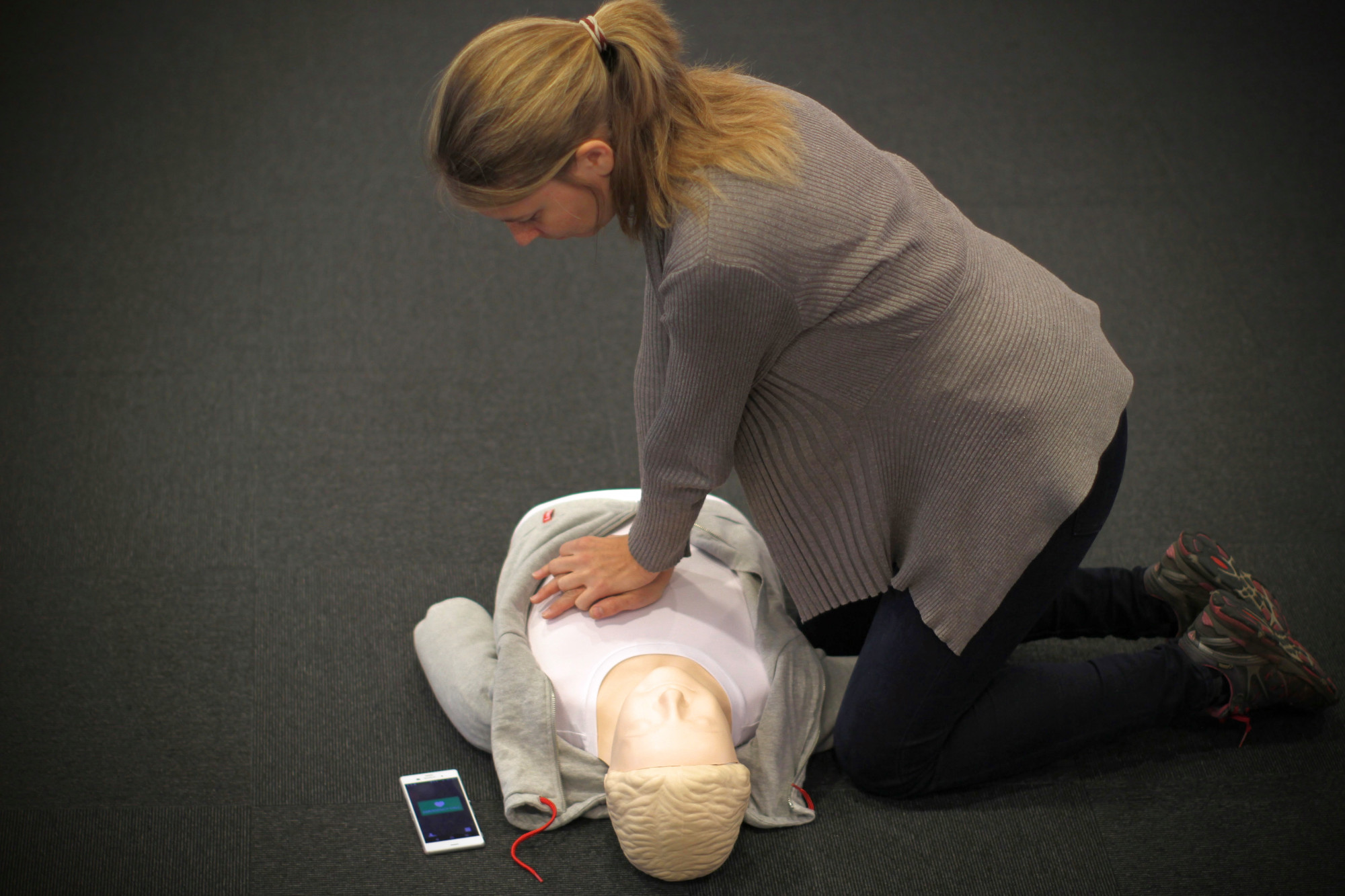
Out-of-hospital cardiac arrest (OHCA) is a major cause of mortality throughout many regions of the world. Calling an emergency number should be the first thing the bystander does.
Today almost everybody has a smartphone, permitting the incorporation of other functions in addition to speech. We have explored the possibilities of measuring CPR quality by using a smartphone camera. We can accurately measure the chest compression rate under noisy challenging conditions that could occur in real emergencies. The algorithm analyses the sequential video frames using image processing techniques and performs the estimation. In addition to measuring the chest compression rate, the algorithm estimates key parameters like time to first compression, total compression time and average compression rate.
The developed algorithm is implemented in two different applications: 1) demonstrate usage in real-emergencies and 2) for training purposes.
Real-emergencies:
The algorithm was implemented in a smartphone app that connects to a webserver for the dispatcher at the emergency center. In an emergency, by pressing a button, th app calls the emergency number and automatically connects to the webserver and streams the CPR quality measurement in real-time, making it feasible for the dispatcher to evaluate the CPR quality performance. In addition the app sends the caller GPS location to the webserver.
The app is now available at Google Play and Appstore under the name TCPR link.
A demo of the real-emergency use-case can be seen here: TCPR Link Demo (YouTube).
Training purposes:
The algorithm is also implemented in two training products and programs by Laerdal Medical, Anniwhere and RevivR. Anniewhere is for remote CPR skill learning using and instructor and RevivR is a short training course to give fundamental CPR skills. The RevivR program has been implemented in 5 countries around the world.
RevivR concept explanation: https://vimeo.com/746560656/670f948dc6
Motivation: https://vimeo.com/699424328
Both Anniewhere and RevivR have gained popularity as training products and programs within Laerdal Medical, with RevivR being the flagship offering. Anniewwhere has facilated over 29 000 trainings and more than 110 000 people has completed the RevivR course.
At BMDLab: Øyvind Meinich-Bache, Kjersti Engan, Trygve Eftestøl, Helge Myklebust
Publications
Engan, Kjersti, Thomas Hinna, Tom Ryen, Tonje S. Birkenes, and Helge Myklebust. 2016. “Chest Compression Rate Measurement from Smartphone Video.” BioMedical Engineering OnLine 15 (1): 95. https://doi.org/10.1186/s12938-016-0218-6.
Meinich-Bache, Oyvind, Kjersti Engan, Tonje S. Birkenes, and Helge Myklebust. 2017. “Robust Real-Time Chest Compression Rate Detection from Smartphone Video.” In Proceedings of the 10th International Symposium on Image and Signal Processing and Analysis, 7–12. Ljubljana, Slovenia: IEEE. https://doi.org/10.1109/ISPA.2017.8073560.
Meinich-Bache, Øyvind, Kjersti Engan, Tonje Søraas Birkenes, and Helge Myklebust. 2018. “Real-Time Chest Compression Quality Measurements by Smartphone Camera.” Journal of Healthcare Engineering 2018 (October): 1–12. https://doi.org/10.1155/2018/6241856.
Meinich-Bache, Øyvind, Kjersti Engan, Trygve Eftestøl, and Ivar Austvoll. 2017. “Detecting Chest Compression Depth Using a Smartphone Camera and Motion Segmentation.” In Image Analysis, edited by Puneet Sharma and Filippo Maria Bianchi, 53–64. Lecture Notes in Computer Science. Cham: Springer International Publishing. https://doi.org/10.1007/978-3-319-59129-2_5.
Meinich-Bache, Oyvind, Kjersti Engan, Trygve Eftestol, and Ivar Austvoll. 2018. “Kinect Modelling of Chest Compressions - A Feasibility Study for Chest Compression Depth Measurement Using Digital Strategies.” In 2018 25th IEEE International Conference on Image Processing (ICIP), 913–17. Athens: IEEE. https://doi.org/10.1109/ICIP.2018.8451387.
North sea race endurance exercise study (NEEDED)
The purpose of the NEEDED study is to determine if sensor technology and machine learning and AI based algorithms can be used to identify an adverse response to exercise.
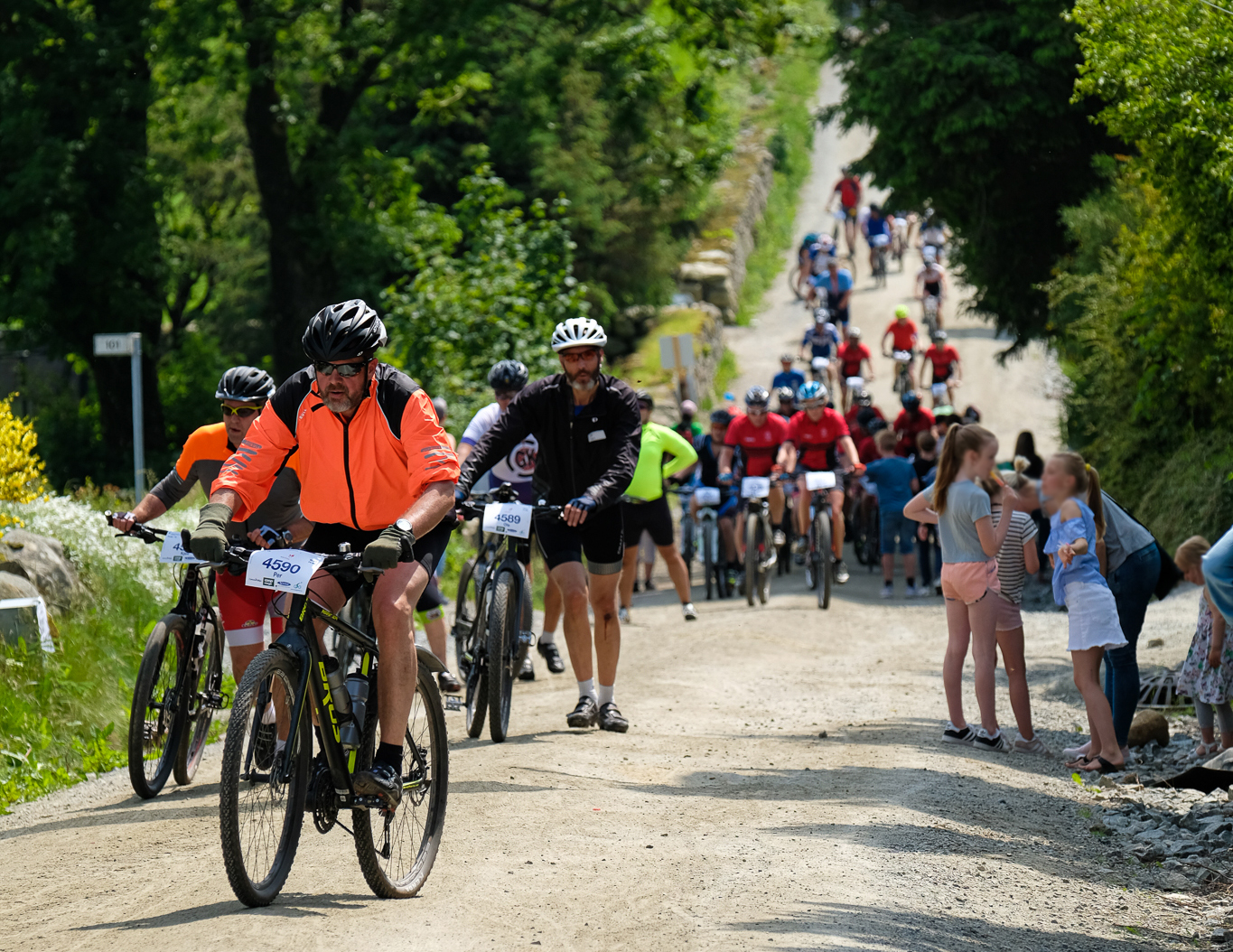
The NEEDED (North Sea Race Endurance Exercise Study) research program currently consists of three studies (NEEDED 2013, 2014 and 2018), including data from more than 1040 presumably healthy subjects exposed to a prolonged episode of high intensity exercise.
We add specific data on heart injury by using the cardiac specific biomarker: cardiac Troponin I. In the present work, we relate data derived from ECG and sport watches to the biomarker response in healthy and sick individuals. We will perform new studies providing additional data on the impact of exercise intensity and duration on the sensor data output and biomarker response in specific populations ranging from healthy Olympic athletes to patients with severe heart disease.
From BMDLab: Stein Ørn, Kjell Le, Tomasz Wittorski, Kjersti Engan and Trygve Eftestøl. Collaborators: Magnus Friestad Bjørkavoll-Bergseth.
Publications
Bjørkavoll‐Bergseth, Magnus, Øyunn Kleiven, Bjørn Auestad, Trygve Eftestøl, Kay Oskal, Martin Nygård, Øyvind Skadberg, mfl. 2020. «Duration of Elevated Heart Rate Is an Important Predictor of Exercise‐Induced Troponin Elevation». Journal of the American Heart Association 9 (4): e014408. https://doi.org/10.1161/JAHA.119.014408.
Długosz, Dominika, Trygve Eftestø, Aleksandra Królak, Tomasz Wiktorski, og Stein Ørn. 2018. «The North Sea Bicycle Race ECG Project: Time-Domain Analysis». Journal of Automation, Mobile Robotics and Intelligent Systems 12 (1): 23–32. https://doi.org/10.14313/JAMRIS_1-2018/3.
Długosz, Dominika, Aleksandra Królak, Trygve Eftestøl, Stein Ørn, Tomasz Wiktorski, Kay Raymond Jenssen Oskal, og Martin Nygård. 2018. «ECG Signal Analysis for Troponin Level Assessment and Coronary Artery Disease Detection: the NEEDED Study 2014». I , 1065–68. https://doi.org/10.15439/2018F247.
Le, Kjell, Trygve Eftestol, Kjersti Engan, Oyunn Kleiven, og Stein Orn. 2019a. «Baseline Wander Removal and Isoelectric Correction in Electrocardiograms Using Clustering». I ICASSP 2019 - 2019 IEEE International Conference on Acoustics, Speech and Signal Processing (ICASSP), 1274–78. Brighton, United Kingdom: IEEE. https://doi.org/10.1109/ICASSP.2019.8683084.
Le, Kjell, Trygve Eftestol, Kjersti Engan, Oyunn Kleiven, og Stein Orn. 2019b. «Validation of Baseline Wander Removal and Isoelectric Correction in Electrocardiograms Using Clustering». I 2019 27th European Signal Processing Conference (EUSIPCO), 1–5. A Coruna, Spain: IEEE. https://doi.org/10.23919/EUSIPCO.2019.8903153.
Le, Kjell, Trygve EftestOl, Kjersti Engan, Stein Orn, og Oyunn Kleiven. 2018. «High Frequency Noise Detection and Handling in ECG Signals». I 2018 26th European Signal Processing Conference (EUSIPCO), 46–50. Rome: IEEE. https://doi.org/10.23919/EUSIPCO.2018.8553046.
Le, Kjell, Trygve Eftestøl, Kjersti Engan, Øyunn Kleiven, og Stein Ørn. 2018. «Invariant Mean Electrical Axis in Electrocardiogram». I . https://doi.org/10.22489/CinC.2018.151.
Svane, Jakob, Tomasz Wiktorski, Stein Ørn, og Trygve Christian Eftestøl. 2023a. «Recurrent Neural Networks for Artifact Correction in HRV Data During Physical Exercise». Nordic Machine Intelligence 3 (1): 11. https://doi.org/10.5617/nmi.10140.
Svane, Jakob, Tomasz Wiktorski, Stein Ørn, og Trygve Christian Eftestøl. 2023b. «Optimizing Support Vector Machines and Autoregressive Integrated Moving Average Methods for Heart Rate Variability Data Correction». MethodsX 11 (desember): 102381. https://doi.org/10.1016/j.mex.2023.102381.
Analysis of magnetic resonance imaging (MR) and intracardial ECG from patients with myocardial infarction
Image analysis and machine learning allows us to investigate the myocardium in our effort to localize regions associated to increased risk of arrhythmia.

Some patients who have had myocardial infarction will be at increased risk of arrhythmias and acute cardiac arrest. In this regard, it is interesting to study changes in the heart's ability to direct electrical impulses, as such changes can lead to the development of dangerous arrhythmias.
We study MRI images of the heart from patients with myocardial infarction. We have subprojects that engage in automatic segmentation of cardiac muscle from surrounding tissues, and automatic segmentation of scar tissue from healthy tissues from MR images of the heart.
Since there are hypotheses that there are boundaries between healthy and dead tissues that induce arrhythmias, we are working to quantify the degree of injury as a probability mapping of the myocardium where the likelihood of scar is visualized.
Using image analysis techniques characterise the texture of the myocardium, machine learning is applied to develop a probability function (Pmap) to indicate the presence of scarred tissue. With the probability mapping we can define myocardial regions, zooming in on regions in the scar border zone and on the scar itself.
These regions can be characterized and analysed to identify which carries information of diagnostic importance, for example for risk of dangerous arrhythmia.
From BMDLab: Stein Ørn, Mina Farmanbar, Trygve Eftestøl. Collaborators: Vidar Frøysa, Gøran Janson Berg, Jørn Kværness.
Publications
Eftestol, Trygve, Erlend Singsaas, Kjersti Engan, Leik Woie, og Stein Orn. 2015. «Automatic detection of microvascular obstruction in patients with myocardial infarction». I 2015 Computing in Cardiology Conference (CinC), 757–60. Nice: IEEE. https://doi.org/10.1109/CIC.2015.7411021.
Engan, K., V. Naranjo, T. Eftestøl, L. Woie, A. Schuchter, og S. Ørn. 2014. «Automatic Detection of Heart Center in Late Gadolinium Enhanced MRI». I XIII Mediterranean Conference on Medical and Biological Engineering and Computing 2013, redigert av Laura M. Roa Romero, 41:165–68. IFMBE Proceedings. Cham: Springer International Publishing. https://doi.org/10.1007/978-3-319-00846-2_41.
Engan, Kjersti, Trygve Eftestol, Stein Orn, Jan Terje Kvaloy, og Leik Woie. 2010. «Exploratory data analysis of image texture and statistical features on myocardium and infarction areas in cardiac magnetic resonance images». I 2010 Annual International Conference of the IEEE Engineering in Medicine and Biology, 5728–31. Buenos Aires: IEEE. https://doi.org/10.1109/IEMBS.2010.5627866.
Engan, Kjersti, Valery Naranjo, Trygve Eftestøl, Stein Ørn, og Leik Woie. 2015. «Segmentation of LG Enhanced Cardiac MRI»: I Proceedings of the International Conference on Bioimaging, 47–55. Lisbon, Portugal: SCITEPRESS - Science and and Technology Publications. https://doi.org/10.5220/0005169200470055.
Frøysa, Vidar, Gøran J. Berg, Trygve Eftestøl, Leik Woie, og Stein Ørn. 2021. «Texture-Based Probability Mapping for Automatic Scar Assessment in Late Gadolinium-Enhanced Cardiovascular Magnetic Resonance Images». European Journal of Radiology Open 8: 100387. https://doi.org/10.1016/j.ejro.2021.100387.
Frøysa, Vidar, Gøran J. Berg, Erlend Singsaas, Trygve Eftestøl, Leik Woie, og Stein Ørn. 2023. «Texture-Based Probability Mapping in Cardiac LGE Images: A Novel Automatic Assessment of Myocardial Injury Following Revascularized STEMI». Preprint. Radiology and Imaging. https://doi.org/10.1101/2023.09.20.23295871.
Kotu, Lasya, Kjersti Engan, Karl Skretting, Frode Måløy, Stein Ørn, Leik Woie, og Trygve Eftestøl. 2013. «Probability Mapping of Scarred Myocardium Using Texture and Intensity Features in CMR Images». BioMedical Engineering OnLine 12 (1): 91. https://doi.org/10.1186/1475-925X-12-91.
Kotu, Lasya Priya, Kjersti Engan, Reza Borhani, Aggelos K. Katsaggelos, Stein Ørn, Leik Woie, og Trygve Eftestøl. 2015. «Cardiac Magnetic Resonance Image-Based Classification of the Risk of Arrhythmias in Post-Myocardial Infarction Patients». Artificial Intelligence in Medicine 64 (3): 205–15. https://doi.org/10.1016/j.artmed.2015.06.001.
Kotu, Lasya Priya, Kjersti Engan, Trygve Eftestol, Stein Orn, og Leik Woie. 2011a. «Segmentation of scarred and non-scarred myocardium in LG enhanced CMR images using intensity-based textural analysis». I 2011 Annual International Conference of the IEEE Engineering in Medicine and Biology Society, 5698–5701. Boston, MA: IEEE. https://doi.org/10.1109/IEMBS.2011.6091379.
———. 2011b. «Texture classification of scarred and non-scarred myocardium in cardiac MRI using learned dictionaries». I 2011 18th IEEE International Conference on Image Processing, 65–68. Brussels: IEEE. https://doi.org/10.1109/ICIP.2011.6116638.
Kotu, Lasya Priya, Kjersti Engan, Karl Skretting, Stein Ørn, Leik Woie, og Trygve Eftestøl. 2013. «Segmentation of Scarred Myocardium in Cardiac Magnetic Resonance Images». ISRN Biomedical Imaging 2013 (desember): 1–12. https://doi.org/10.1155/2013/504594.
Woie, L., T. Eftestol, K. Engan, J. T. Kvaloy, D. W. T. Nilsen, og S. Orn. 2011. «The Heart Rate of Ventricular Tachycardia Following an Old Myocardial Infarction Is Inversely Related to the Size of Scarring». Europace 13 (6): 864–68. https://doi.org/10.1093/europace/euq466.
Woie, Leik, Kjersti Engan, Trygve Eftestøl, Jan Terje Kvaløy, og Stein Ørn. 2015. «The Relationship between Transmurality of Ischemic Scars and the Heart Rate of Ventricular Tachycardia». Scandinavian Cardiovascular Journal 49 (5): 241–48. https://doi.org/10.3109/14017431.2015.1066844.
Woie, Leik, Kjersti Engan, Trygve Eftestøl, Alf Inge Larsen, og Stein Ørn. 2015. «The Localization and Characterization of Ischemic Scars in Relation to the Infarct Related Coronary Artery Assessed by Cardiac Magnetic Resonance and a Novel Automatic Postprocessing Method». Cardiology Research and Practice 2015: 1–9. https://doi.org/10.1155/2015/120874.
Woie, Leik, Frode Måløy, Trygve Eftestøl, Kjersti Engan, Thor Edvardsen, Jan Terje Kvaløy, og Stein Ørn. 2014. «Comparing a Novel Automatic 3D Method for LGE-CMR Quantification of Scar Size with Established Methods». The International Journal of Cardiovascular Imaging 30 (2): 339–47. https://doi.org/10.1007/s10554-013-0329-0.
Resuscitation data analysis
Using signal processing and machine learning methods we aim to monitor the patient’s state and efficacy of therapy in an attempt to find an optimal way of therapy towards survival.
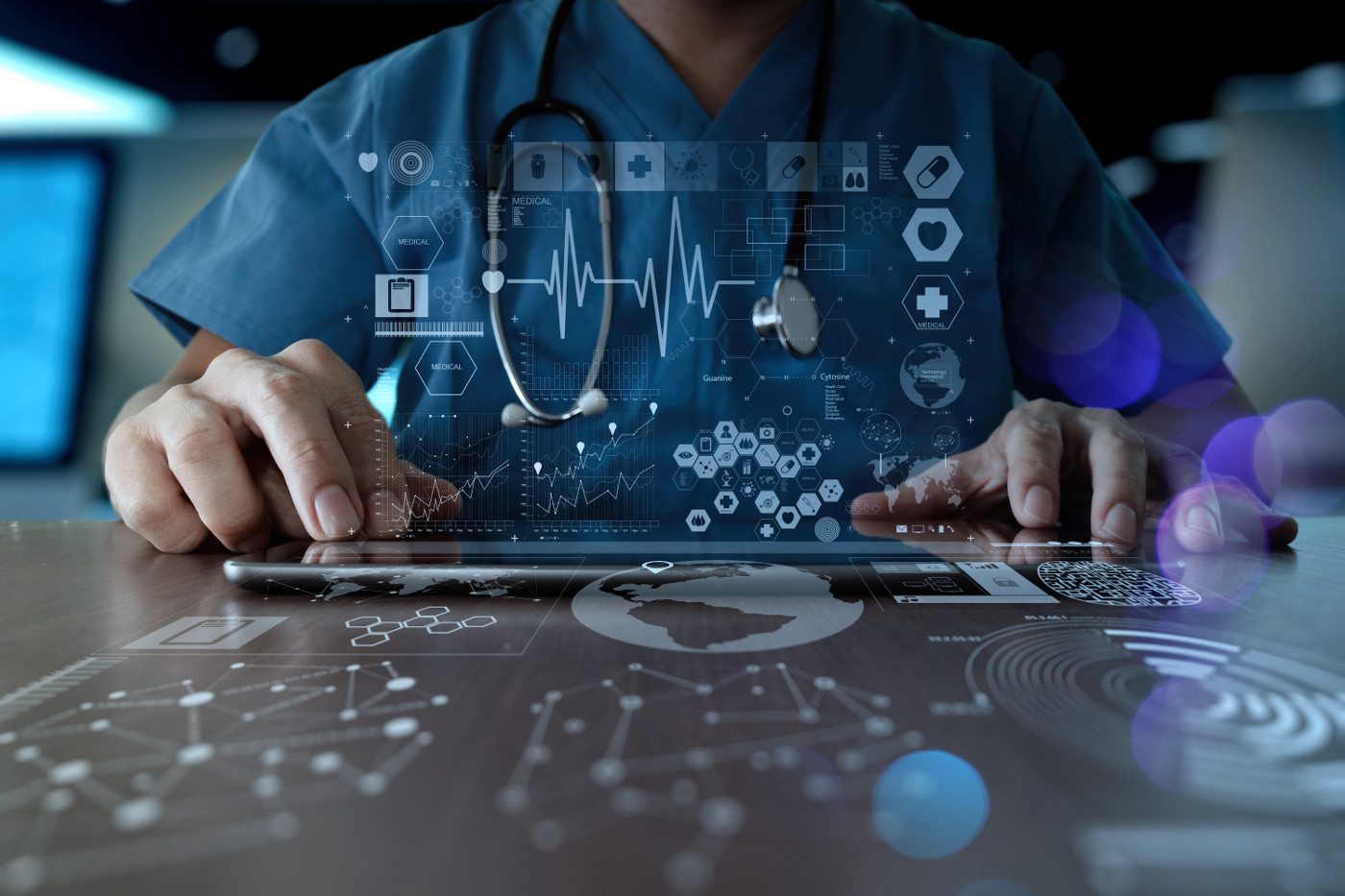
In Norway there are approximately 3000 annual cases of patients experiencing cardiac arrest outside hospitals in addition to a significant number in hospitals. In out of hospital cardiac arrest, rescuers provide chest compressions, ventilations and electrical shock in an attempt to resuscitate the patient. In our attempt to understand the relationship between therapy and the patient’s response. We have developed methods to detect chest compression and recognize the cardiac rhythm to do this.
Mortality from cardiac arrest outside hospitals is unfortunately high. Significant focus and research on systematic treatment of cardiac arrest has nevertheless improved the prognosis considerably, especially for those who survive until they arrive at the hospital. The key elements of therapy are cardiac compressions, ventilations and electric shock to reestablish circulation. until the ambulance arrives.
Ongoing research is about developing new signal processing algorithms and statistical models to be able to determine which effect the various aspects of therapy have on survival. Currently we are working on (1) developing indicator for monitoring the state of the patient, and (2) an indicator for monitoring the quality of the therapy.
To establish these indicators, we have worked with signal processing and machine learning methods on the electrocardiograms, chest compression and ventilations signals measured throughout the resuscitation episodes. We have worked with adaptive filters to remove the noise from chest compressions, we have developed chest compression and ventilation detectors so that the therapy can be characterised. Furthermore, we have used machine learning to develop methods to determine the cardiac rhythms automatically.
With these methods in place, we want to study the relationship between therapy and the patient response to identify which factors are important for successful outcomes during therapy and for survival.
Various parts of this research are conducted in collaboration with several research groups, both nationally and internationally.
From BMDLab: Trygve Eftestøl, Jan T. Kvaløy
Collaborators: Ali Bahrami Rad, Unai Irusta, Elisabete Aramendi, Erik Alonso, Trond Nordseth, Eirik Skogvoll, Lars Wik, Jo Kramer-Johansen Funding: NRC, Laerdal Foundation, Stiftelsen Norsk Luftambulanse
Publications
Alonso, Erik, Trygve Eftestøl, Elisabete Aramendi, Jo Kramer-Johansen, Eirik Skogvoll, og Trond Nordseth. 2014. «Beyond Ventricular Fibrillation Analysis: Comprehensive Waveform Analysis for All Cardiac Rhythms Occurring during Resuscitation». Resuscitation 85 (11): 1541–48. https://doi.org/10.1016/j.resuscitation.2014.08.022.
Ayala, U., T. Eftestøl, E. Alonso, U. Irusta, E. Aramendi, S. Wali, og J. Kramer-Johansen. 2014. «Automatic Detection of Chest Compressions for the Assessment of CPR-Quality Parameters». Resuscitation 85 (7): 957–63. https://doi.org/10.1016/j.resuscitation.2014.04.007.
Coult, Jason, Heemun Kwok, Trygve Eftestøl, Shiv Bhandari, Jennifer Blackwood, Nona Sotoodehnia, Peter J. Kudenchuk, og Thomas D. Rea. 2022. «Continuous Assessment of Ventricular Fibrillation Prognostic Status during CPR: Implications for Resuscitation». Resuscitation 179 (oktober): 152–62. https://doi.org/10.1016/j.resuscitation.2022.08.015.
Eftestøl, Trygve, Svein Erik Stokka, Jan Terje Kvaløy, Ali Bahrami Rad, Unai Irusta, Elisabete Aramendi, Erik Alonso, mfl. 2020. «A Probabilistic Function to Model the Relationship between Quality of Chest Compressions and the Physiological Response for Patients in Cardiac Arrest». I . https://doi.org/10.22489/CinC.2020.073.
Eftestøl, Trygve, og Lawrence D. Sherman. 2014. «Towards the Automated Analysis and Database Development of Defibrillator Data from Cardiac Arrest». BioMed Research International 2014: 1–19. https://doi.org/10.1155/2014/276965.
Eftestøl, Trygve, Kjetil Sunde, Sven Ole Aase, John Håkon Husøy, og Petter Andreas Steen. 2000. «Predicting Outcome of Defibrillation by Spectral Characterization and Nonparametric Classification of Ventricular Fibrillation in Patients With Out-of-Hospital Cardiac Arrest». Circulation 102 (13): 1523–29. https://doi.org/10.1161/01.CIR.102.13.1523.
Eftestøl, Trygve, Kjetil Sunde, og Petter Andreas Steen. 2002. «Effects of Interrupting Precordial Compressions on the Calculated Probability of Defibrillation Success During Out-of-Hospital Cardiac Arrest». Circulation 105 (19): 2270–73. https://doi.org/10.1161/01.CIR.0000016362.42586.FE.
Eftestøl, Trygve, Kari Anne Haaland Thorsen, Erlend Tøssebro, Chunming Rong, og Petter Andreas Steen. 2009. «Representing Resuscitation Data—Considerations on Efficient Analysis of Quality of Cardiopulmonary Resuscitation». Resuscitation 80 (3): 311–17. https://doi.org/10.1016/j.resuscitation.2008.11.022.
Eftestøl, Trygve, Lars Wik, Kjetil Sunde, og Petter Andreas Steen. 2004. «Effects of Cardiopulmonary Resuscitation on Predictors of Ventricular Fibrillation Defibrillation Success During Out-of-Hospital Cardiac Arrest». Circulation 110 (1): 10–15. https://doi.org/10.1161/01.CIR.0000133323.15565.75.
Eilevstjønn, Joar, Trygve Eftestøl, Sven Ole Aase, Helge Myklebust, John Håkon Husøy, og Petter Andreas Steen. 2004. «Feasibility of Shock Advice Analysis during CPR through Removal of CPR Artefacts from the Human ECG». Resuscitation 61 (2): 131–41. https://doi.org/10.1016/j.resuscitation.2003.12.019.
Gundersen, Kenneth, Jan Terje Kvaløy, Trygve Eftestøl, og Jo Kramer‐Johansen. 2015. «Modelling Ventricular Fibrillation Coarseness during Cardiopulmonary Resuscitation by Mixed Effects Stochastic Differential Equations». Statistics in Medicine 34 (23): 3159–69. https://doi.org/10.1002/sim.6539.
Irusta, U., J. Ruiz, S.R. De Gauna, T. Eftestol, og J. Kramer-Johansen. 2009. «A Least Mean-Square Filter for the Estimation of the Cardiopulmonary Resuscitation Artifact Based on the Frequency of the Compressions». IEEE Transactions on Biomedical Engineering 56 (4): 1052–62. https://doi.org/10.1109/TBME.2008.2010329.
Isasi, Iraia, Unai Irusta, Elisabete Aramendi, Trygve Eftestøl, Jo Kramer-Johansen, og Lars Wik. 2020. «Rhythm Analysis during Cardiopulmonary Resuscitation Using Convolutional Neural Networks». Entropy 22 (6): 595. https://doi.org/10.3390/e22060595.
Kvaløy, Jan Terje, Eirik Skogvoll, Trygve Eftestøl, Kenneth Gundersen, Jo Kramer-Johansen, Theresa Mariero Olasveengen, og Petter Andreas Steen. 2009. «Which Factors Influence Spontaneous State Transitions during Resuscitation?» Resuscitation 80 (8): 863–69. https://doi.org/10.1016/j.resuscitation.2009.04.042.
Nordseth, Trond, Dana Peres Edelson, Daniel Bergum, Theresa Mariero Olasveengen, Trygve Eftestøl, Rune Wiseth, Jan Terje Kvaløy, Benjamin S. Abella, og Eirik Skogvoll. 2014. «Optimal Loop Duration during the Provision of In-Hospital Advanced Life Support (ALS) to Patients with an Initial Non-Shockable Rhythm». Resuscitation 85 (1): 75–81. https://doi.org/10.1016/j.resuscitation.2013.08.261.
Nordseth, Trond, Dana E. Niles, Trygve Eftestøl, Robert M. Sutton, Unai Irusta, Benjamin S. Abella, Robert A. Berg, Vinay M. Nadkarni, og Eirik Skogvoll. 2019. «Rhythm Characteristics and Patterns of Change during Cardiopulmonary Resuscitation for In-Hospital Paediatric Cardiac Arrest». Resuscitation 135 (februar): 45–50. https://doi.org/10.1016/j.resuscitation.2019.01.006.
Nordseth, Trond, Theresa Mariero Olasveengen, Jan Terje Kvaløy, Lars Wik, Petter Andreas Steen, og Eirik Skogvoll. 2012. «Dynamic Effects of Adrenaline (Epinephrine) in out-of-Hospital Cardiac Arrest with Initial Pulseless Electrical Activity (PEA)». Resuscitation 83 (8): 946–52. https://doi.org/10.1016/j.resuscitation.2012.02.031.
Norvik, A., J.T. Kvaløy, Gw. Skjeflo, D. Bergum, T. Nordseth, J.P. Loennechen, E. Unneland, mfl. 2023. «Heart Rate and QRS Duration as Biomarkers Predict the Immediate Outcome from Pulseless Electrical Activity». Resuscitation 185 (april): 109739. https://doi.org/10.1016/j.resuscitation.2023.109739.
Norvik, A., E. Unneland, D. Bergum, D.G. Buckler, A. Bhardwaj, T. Eftestøl, E. Aramendi, mfl. 2022. «Pulseless Electrical Activity in In-Hospital Cardiac Arrest – A Crossroad for Decisions». Resuscitation 176 (juli): 117–24. https://doi.org/10.1016/j.resuscitation.2022.04.024.
Olasveengen, Theresa M., Trygve Eftestøl, Kenneth Gundersen, Lars Wik, og Kjetil Sunde. 2009. «Acute Ischemic Heart Disease Alters Ventricular Fibrillation Waveform Characteristics in Out-of Hospital Cardiac Arrest». Resuscitation 80 (4): 412–17. https://doi.org/10.1016/j.resuscitation.2009.01.012.
Olasveengen, T.M., T. Eftestøl, K. Gundersen, P.A. Steen, L. Wik, og K. Sunde. 2008. «Ventricular Fibrillation Characteristics Are Different in Patients with Coronary Heart Disease Compared to Patients with a Primary Arrhythmia». Resuscitation 77 (mai): S16. https://doi.org/10.1016/j.resuscitation.2008.03.058.
Rad, Ali Bahrami, Trygve Eftestol, Kjersti Engan, Unai Irusta, Jan Terje Kvaloy, Jo Kramer-Johansen, Lars Wik, og Aggelos K. Katsaggelos. 2017. «ECG-Based Classification of Resuscitation Cardiac Rhythms for Retrospective Data Analysis». IEEE Transactions on Biomedical Engineering 64 (10): 2411–18. https://doi.org/10.1109/TBME.2017.2688380.
Rad, Ali Bahrami, Trygve Eftestøl, Unai Irusta, Jan Terje Kvaløy, Lars Wik, Jo Kramer-Johansen, Aggelos K. Katsaggelos, og Kjersti Engan. 2018. «An Automatic System for the Comprehensive Retrospective Analysis of Cardiac Rhythms in Resuscitation Episodes». Resuscitation 122 (januar): 6–12. https://doi.org/10.1016/j.resuscitation.2017.11.035.
Rad, Ali Bahrami, Kjersti Engan, Aggelos K. Katsaggelos, Jan Terje Kvaløy, Lars Wik, Jo Kramer-Johansen, Unai Irusta, og Trygve Eftestøl. 2016. «Automatic Cardiac Rhythm Interpretation during Resuscitation». Resuscitation 102 (mai): 44–50. https://doi.org/10.1016/j.resuscitation.2016.01.015.
Risdal, Martin, Sven Ole Aase, Jo Kramer-Johansen, og Trygve Eftestol. 2008. «Automatic Identification of Return of Spontaneous Circulation During Cardiopulmonary Resuscitation». IEEE Transactions on Biomedical Engineering 55 (1): 60–68. https://doi.org/10.1109/TBME.2007.910644.
Risdal, Martin, Sven Ole Aase, Mette Stavland, og Trygve Eftestol. 2007. «Impedance-Based Ventilation Detection During Cardiopulmonary Resuscitation». IEEE Transactions on Biomedical Engineering 54 (12): 2237–45. https://doi.org/10.1109/TBME.2007.908328.
Skogvoll, Eirik, Trygve Eftestøl, Kenneth Gundersen, Jan Terje Kvaløy, Jo Kramer-Johansen, Theresa Mariero Olasveengen, og Petter Andreas Steen. 2008. «Dynamics and State Transitions during Resuscitation in Out-of-Hospital Cardiac Arrest». Resuscitation 78 (1): 30–37. https://doi.org/10.1016/j.resuscitation.2008.02.015.
Skogvoll, Eirik, Trond Nordseth, Robert M. Sutton, Trygve Eftestøl, Unai Irusta, Elisabete Aramendi, Dana Niles, mfl. 2020. «Factors Affecting the Course of Resuscitation from Cardiac Arrest with Pulseless Electrical Activity in Children and Adolescents». Resuscitation 152 (juli): 116–22. https://doi.org/10.1016/j.resuscitation.2020.05.013.
Sunde, Kjetil, Trygve Eftestøl, Christian Askenberg, og Petter Andreas Steen. 1999. «Quality Assessment of Defibrillation and Advanced Life Support Using Data from the Medical Control Module of the Defibrillator». Resuscitation 41 (3): 237–47. https://doi.org/10.1016/S0300-9572(99)00059-3.
Unneland, Eirik, Anders Norvik, Daniel Bergum, David G. Buckler, Abhishek Bhardwaj, Trygve Christian Eftestøl, Elisabete Aramendi, mfl. 2023. «Non-Shockable Rhythms: A Parametric Model for the Immediate Probability of Return of Spontaneous Circulation». Resuscitation 191 (oktober): 109895. https://doi.org/10.1016/j.resuscitation.2023.109895.
Estimation of coronary blood flow velocities from sparse and uncertain tomographic projections
We seek to estimate the velocity of the blood inside the major vessels of the human heart based on image sequences taken using a C-arm during angiography operation.
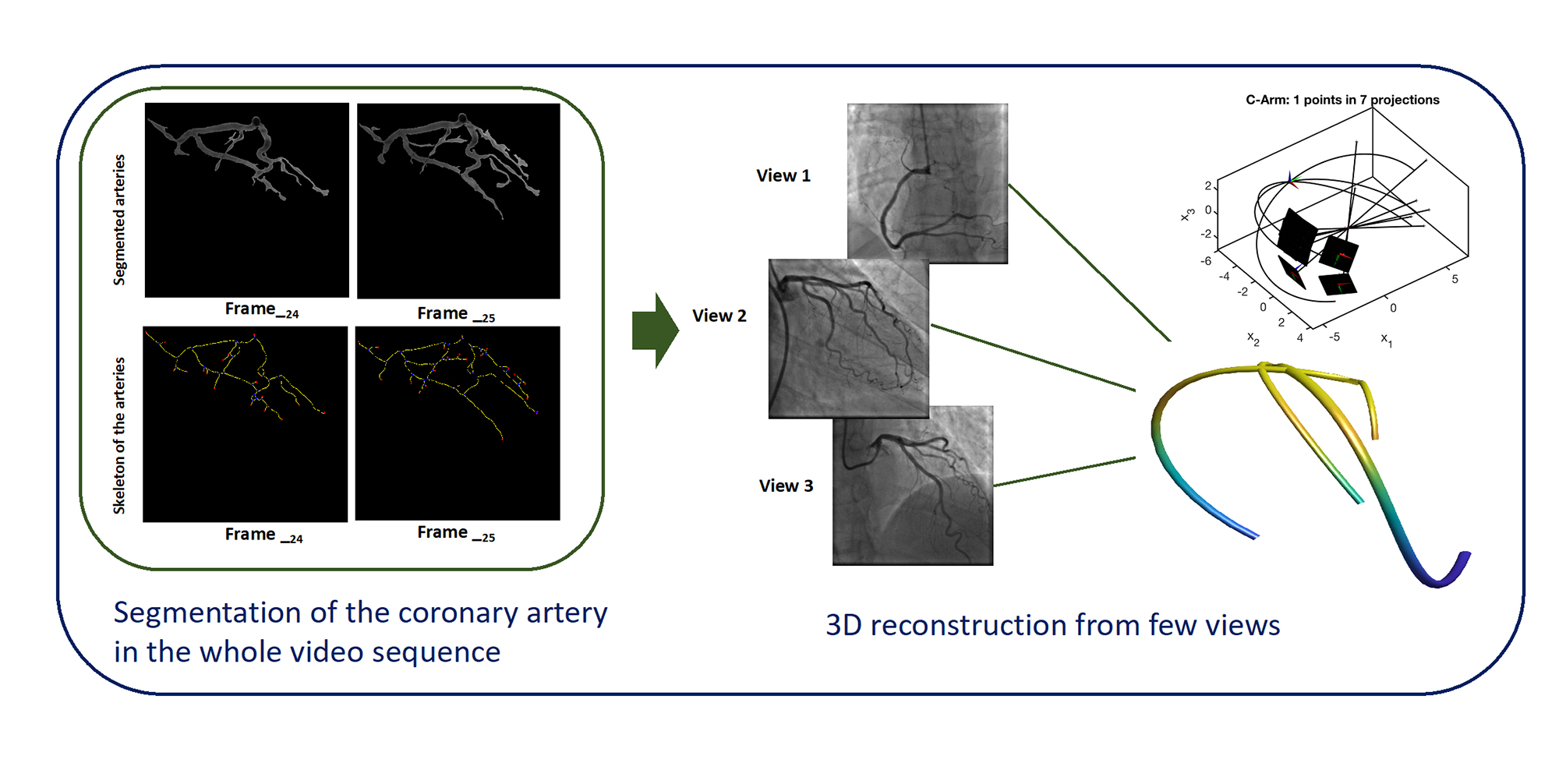
This project is on coronary flow reserve study conducted as a collaboration between the University of Stavanger, Stavanger university hospital, Norway and University of Copenhagen, Denmark.
Coronary flow reserve is the ratio between the maximal flow and the resting flow down a coronary vessel. Impaired coronary flow reserve is associated with increased morbidity and mortality in patients with angina pectoris. The final goal of the project is to assess coronary flow reserve by estimating the ratio between blood flow during full hyperemia using adenosine infusion and blood flow velocity at rest.
Clinical standard procedures to assess the coronary flow reserve is angiography and ultrasounds. For angiography, a contrast agent is injected into the vessels, and the flow of the agent is visualized using X-ray. In ultrasound procedures a wire is inserted into the vessels and by the doppler effect the flow of blood is measured. Both techniques are invasive and performed in an operation room.
In this project, we seek to estimate the velocity of the blood inside the major vessels of the human heart based on image sequences taken using a C-arm during angiography operation. The project consists of two problems: (I) the creation of 3D, personalised models of beating coronary arteries on the surface of the heart and (II) the estimation of the time-varying velocity field of the blood inside the arteries.
Finally, we note that the quality of the reconstruction depends on which viewing angles, the C-arm is positioned. The C-arm has more degrees of freedom than a typical computed tomography system, which implies that fewer views may be needed to obtain necessary measurements for estimating the coronary flow reserve. However, in the long run, it is essential that the system runs in real-time, and that it can give suggestions to the operator on additional angles to optimize the estimations.
From BMDLab: Mahdieh Khanmohammadi (K.Engan, T. Eftestøl)
Collaborators: Yuan Wang, Jon Sporring (Univeristy of Copenhagen), Charlotte Sæland, Alf Inge Larsen (SUS)
Coronary blood flow analysis from angiograms
We seek to estimate the blood flow velocity in major coronary vessels of the human heart from sparse and uncertain tomographic views taken using a C-arm during angiography operation.
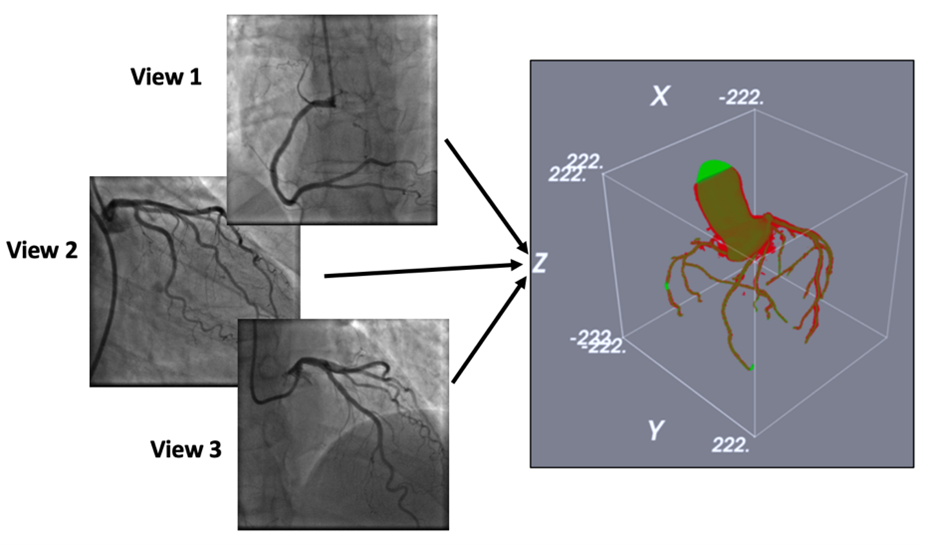
Coronary flow reserve is the ratio between the maximal flow and the resting flow down a coronary vessel. Impaired coronary flow reserve is associated with increased morbidity and mortality in patients with angina pectoris. The final goal of the project is to assess coronary flow reserve by estimating the ratio between blood flow during full hyperemia using adenosine infusion and blood flow velocity at rest.
Clinical standard procedures to assess the coronary flow reserve is angiography and ultrasounds. For angiography, a contrast agent is injected into the vessels, and the flow of the agent is visualized using X-ray. In ultrasound procedures a wire is inserted into the vessels and by the doppler effect the flow of blood is measured. Both techniques are invasive and performed in an operation room.
In this project, we seek to estimate the velocity of the blood inside the major vessels of the human heart based on image sequences taken using a C-arm during angiography operation. The project consists of two problems: (I) the creation of 3D, personalised models of beating coronary arteries on the surface of the heart and (II) the estimation of the time-varying velocity field of the blood inside the arteries.
Finally, we note that the quality of the reconstruction depends on which viewing angles, the C-arm is positioned. The C-arm has more degrees of freedom than a typical computed tomography system, which implies that fewer views may be needed to obtain necessary measurements for estimating the coronary flow reserve. However, in the long run, it is essential that the system runs in real-time, and that it can give suggestions to the operator on additional angles to optimize the estimations.
From BMDLab: Mahdieh Khanmohammadi, Kersti Engan, Trygve Eftestøl
Collaborators: Jon Sporring (Univeristy of Copenhagen), Alf Inge Larsen (Stavanger University Hospital)
Publications
Khanmohammadi, M., Engan, K., Eftestol, T., Soland, C., & Larsen, A. I. (2017). Segmentation of coronary arteries from X-ray angiography sequences during contrast fluid propagation by image registration. 2017 IEEE Global Conference on Signal and Information Processing (GlobalSIP), 715–719. https://doi.org/10.1109/GlobalSIP.2017.8309053
Khanmohammadi, M., Engan, K., Sæland, C., Eftestøl, T., & Larsen, A. I. (2019). Automatic Estimation of Coronary Blood Flow Velocity Step 1 for Developing a Tool to Diagnose Patients With Micro-Vascular Angina Pectoris. Frontiers in Cardiovascular Medicine, 6, 1. https://doi.org/10.3389/fcvm.2019.00001
AI-assisted EEG analysis for neurogenerative diseases
Parkinson’s disease (PD) is clinically characterized by both motor symptoms, such as bradykinesia, rigidity, and rest tremor, and non-motor symptoms, such as cognitive deficits.

Accurate diagnosis of PD increases the chance of success for neuroprotective disease-modifying treatments. However, the accuracy of current clinical diagnostic tests for PD is generally unsatisfactory. Electroencephalography (EEG) serves as a convenient, inexpensive, and non-invasive technique for analyzing the brain’s electrical activity. EEG has the potential to provide a supporting detection of PD for clinicians and, in addition, an assessment of the progression and help with its characterization. However, analysis of EEG is challenging even for experienced clinicians.
In this project, we aim to develop AI tools to analyze in an automatic way EEG recordings of patients with PD. Ultimately, the project aims to pave the way to having a reliable and automatic tool for EEG analysis in the context of supporting the diagnosis of PD, assessment of its progression, and characterization of the disease stages. The project is a collaboration between the University of Stavanger (UiS) BMDLab and Cognitive Lab.
From BMDLab: Anna Kurbatskaya and Alvaro Fernandez-Quilez
Collaborators: Kolbjørn Brønnick
Publications
Kurbatskaya, Anna, Alberto Jaramillo-Jimenez, John Fredy Ochoa-Gomez, Kolbjørn Brønnick, og Alvaro Fernandez-Quilez. 2023a. «Machine Learning-Based Detection of Parkinson’s Disease From Resting-State EEG: A Multi-Center Study». I 2023 45th Annual International Conference of the IEEE Engineering in Medicine & Biology Society (EMBC), 1–4. Sydney, Australia: IEEE. https://doi.org/10.1109/EMBC40787.2023.10340700.
Kurbatskaya, Anna, Alberto Jaramillo-Jimenez, John Fredy Ochoa-Gomez, Kolbjørn Brønnick, og Alvaro Fernandez-Quilez. 2023b. «Assessing Gender Fairness in EEG-Based Machine Learning Detection of Parkinson’s Disease: A Multi-Center Study». I 2023 31st European Signal Processing Conference (EUSIPCO), 1020–24. Helsinki, Finland: IEEE. https://doi.org/10.23919/EUSIPCO58844.2023.10289837.
Alzheimer's disease analysis based on Electronic Health Records and patients’ speech using Natural Language processing
Developing hybrid machine-learning and Natural Language processing solutions for early detection of speech-related signs and cognitive changes in individuals at high risk of Alzheimer's Disease.
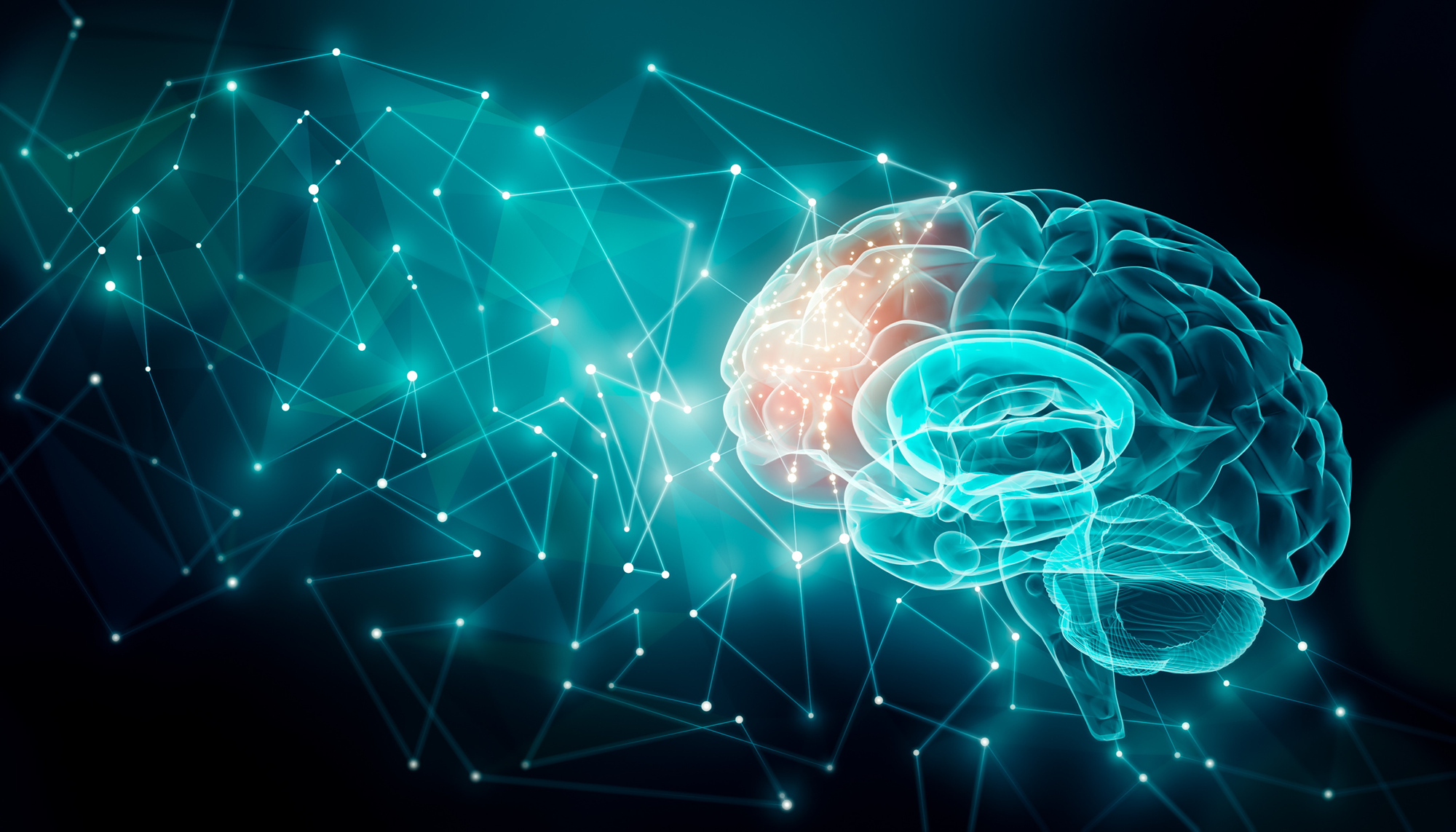
Dementia is a complex and progressive neurological disorder characterized by symptoms, including difficulties with language, cognitive functioning challenges, slow or hesitant speech, and memory problems. It is widespread among older individuals, impacting approximately 47.5 million people worldwide. Alzheimer's Disease (AD) is the leading cause of dementia, accounting for 60–80% of cases where symptoms usually develop slowly and worsen over a few years.
The absence of any medical treatment or intervention currently available to reverse AD effects emphasizes the urgent need for research and interventions to address this significant public health concern in aging societies. A prominent symptom in individuals with AD is the decline in their speech abilities, which stems from the gradual deterioration of their cognitive functions.
The primary objective of this research is to develop innovative hybrid machine-learning solutions for the early detection of speech-related signs and changes in cognitive function in a high-risk group prone to later conversion to AD and to investigate NLP's potential to support patients with AD dementia.
From BMDLab: Arezo Shakeri, Mina Farmanbar
Collaborators: Krisztian Balog
Analysis of brain magnetic resonance (MR) images from patients with dementia
The purpose of the project is to investigate dementia in MR images using image processing and machine learning techniques.
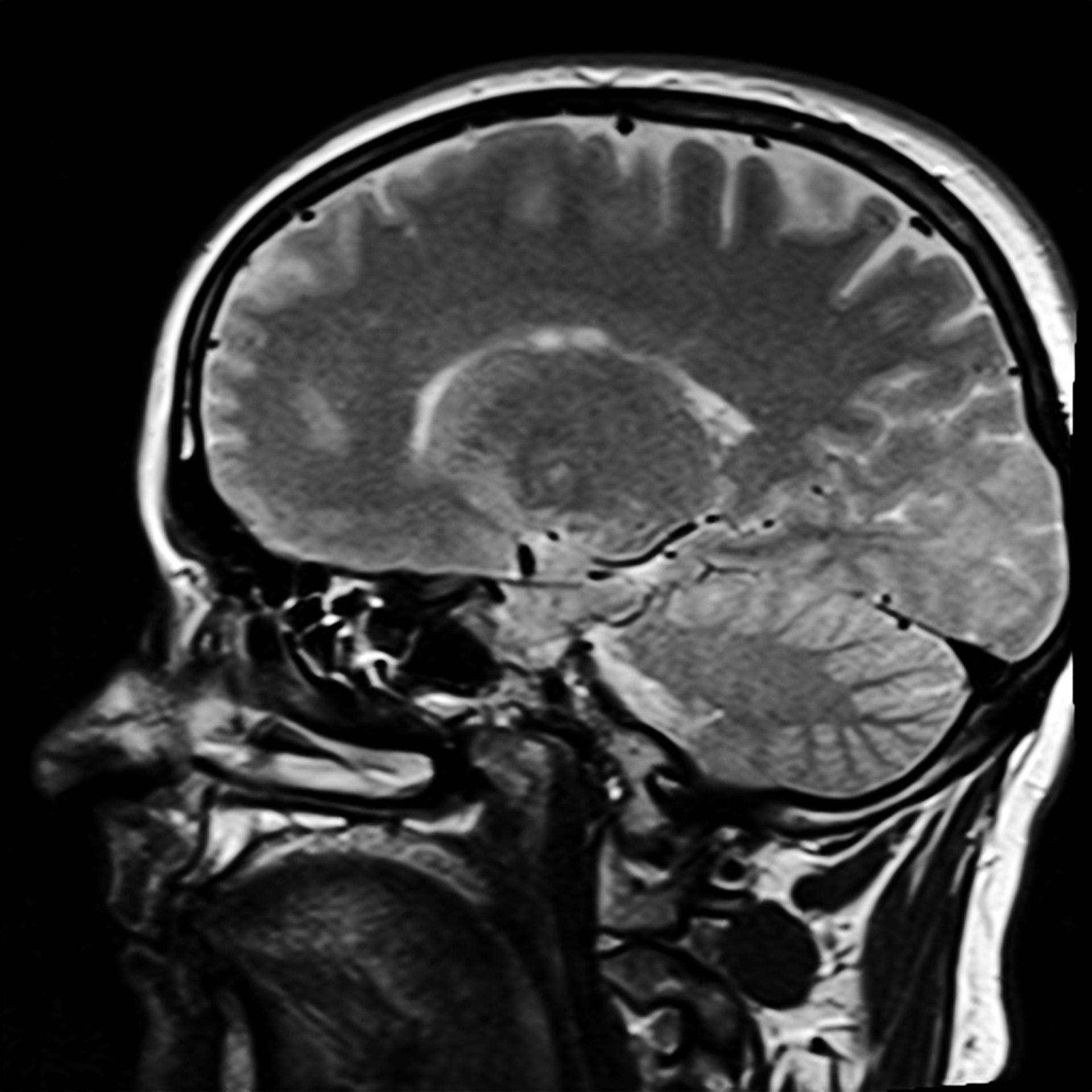
Today, a combination of markers is used to determine diagnosis. In the project we look at hyperintense areas in the white substance part of the brain. These hyperintense areas are known to increase in size also in normal, as a function of age. However, the size and location are also linked to different forms of dementia.
We aim to develop an individualized disease severity index for prodromal dementia using a multi-biomarker and deep learning approach
From BMDLab: Ketil Oppedal, Solveig Kristina Hammonds, Kathinka D. Kurz, Trygve Eftestøl
Analysis of perfusion CT (CTP) data in acute stroke patients
We are utilizing image processing and artificial intelligence (AI) based methods to characterize and analyze the properties of tissue, vessels and thrombi affected by stroke.
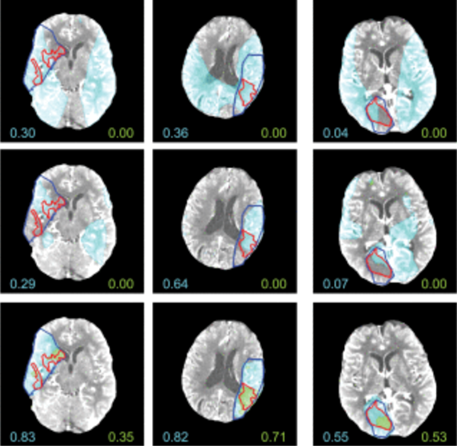
We are developing different methods, including deep neural network approaches, to segment and study the infarcted regions after a stroke in order to contribute in accelerating the medical decision making.
A cerebral stroke is a severe neurological condition that can cause lasting brain damage, long-term disability, and death. Ischemic stroke is the most common type, accounting for 87% of all cerebral strokes. An ischemic stroke occurs when an artery that supplies blood to the brain is obstructed. Neurological disorders are the leading cause of disability in the world with cerebral stroke accounting for the highest disability and mortality. Cerebral stroke is the third cause of death among adults in Norway and the second most common cause worldwide. Thus, cerebral stroke has a huge socio-economic impact for society and a tremendous impact on the quality of life of every single patient.
Rapid recognition of stroke symptoms, patient transfer and acute treatment are of vital importance in the acute setting and significantly improve outcomes in acute stroke patients. One common initial procedure for patients with suspected acute ichemic stroke is the acquisition of Computed Tomography Perfusion (CTP) scanned over the injection period of a contrast agent. A series of parametric color-coded maps are generated from the CTP based on calculations on blood perfusion. These maps are interpreted by a radiologist to help assess the severity of the stroke and to identify the different infarcted regions inside the brain.
Whether treatment is applied is dependent on time from symptoms onset to hospital admission but also largely on imaging results with CTP being the key-modality for patient selection. However, calculations on blood perfusion in the ischemic area based on CTP are far from perfect in diagnostic accuracy, and further improvement of the methods in use is needed.
In our project we are exploring different methods, including deep neural network approaches, to segment the infarcted regions in a fully automated way in order to contribute in accelerating the medical decision making. Supervised neural networks need huge amount of labeled data, which is a cumbersome procedure. We are exploring unsupervised algorithms and to train those networks we are using generative adversarial networks (GANs) to augment CTP data.
We will also use a parametric tool called capillary transit time heteogeniety (CTH) which assesses the environment on the capillary level during an ischemic event in the brain. These analyzations will be done with the use of an external software (Cercare Medical ApS). CTH has shown to be one of the most promising calculation tools having the capasity to select more patients to treatment.
PhD students on the project:
- Technical PhD student (defended Dec. 2023): Luca Tomasetti, Project: Image analysis and artificial intelligence on computed tomography (CT) perfusion and angiography images of acute stroke patients. Supervisors: Mahdieh Khanmohammadi, Kjersti Engan, Kathinka Kurz.
- Medical PhD student: Liv Jorun Høllesli, start nov 2019. Project: In depth analysis of perfusion computed tomography (CTP) in patients with acute stroke. Supervisors: Kathinka Kurz, Kjersti Engan.
From BMDLab: Mahdieh Khanmohammadi, Kjersti Engan, Liv Jorunn Høllesli, Kathinka Kurz, Luca Tomasetti
Publications
Tomasetti, L., Engan, K., Høllesli, L. J., Kurz, K. D., & Khanmohammadi, M. (2023). CT Perfusion is All we Need: 4D CNN Segmentation of Penumbra and Core in Patients With Suspected Acute Ischemic Stroke. IEEE Access, 11, 138936–138953. https://doi.org/10.1109/ACCESS.2023.3336590
Tomasetti, L., Hansen, S., Khanmohammadi, M., Engan, K., Høllesli, L. J., Kurz, K. D., & Kampffmeyer, M. (2023). Self-Supervised Few-Shot Learning for Ischemic Stroke Lesion Segmentation. 2023 IEEE 20th International Symposium on Biomedical Imaging (ISBI), 1–5. https://doi.org/10.1109/ISBI53787.2023.10230655
Tomasetti, L., Hollesli, L. J., Engan, K., Kurz, K. D., Kurz, M. W., & Khanmohammadi, M. (2022). Machine Learning Algorithms Versus Thresholding to Segment Ischemic Regions in Patients With Acute Ischemic Stroke. IEEE Journal of Biomedical and Health Informatics, 26(2), 660–672. https://doi.org/10.1109/JBHI.2021.3097591
Tomasetti, L., Khanmohammadi, M., Engan, K., Høllesli, L. J., & Kurz, K. D. (2022). Multi-input segmentation of damaged brain in acute ischemic stroke patients using slow fusion with skip connection. Proceedings of the Northern Lights Deep Learning Workshop, 3. https://doi.org/10.7557/18.6223
Tomasetti, L., Engan, K., Khanmohammadi, M., & Kurz, K. D. (2020a). CNN Based Segmentation of Infarcted Regions in Acute Cerebral Stroke Patients From Computed Tomography Perfusion Imaging. Proceedings of the 11th ACM International Conference on Bioinformatics, Computational Biology and Health Informatics, 1–8. https://doi.org/10.1145/3388440.3412470
Høllesli, Liv Jorunn, Soffien Chadli Ajmi, Martin W. Kurz, Thomas Bailey Tysland, Morten Hagir, Ingvild Dalen, Sigrun Anna Qvindesland, Hege Ersdal, og Kathinka D. Kurz. 2022. «Simulation‐based Team‐training in Acute Stroke: Is It Safe to Speed Up?» Brain and Behavior 12 (12): e2814. https://doi.org/10.1002/brb3.2814.
Statistical shape analysis with application to Parkinson’s disease
The purpose of the project is to find shape models for brain structures, and detect global and local shape changes in Parkinson using statistical inference.
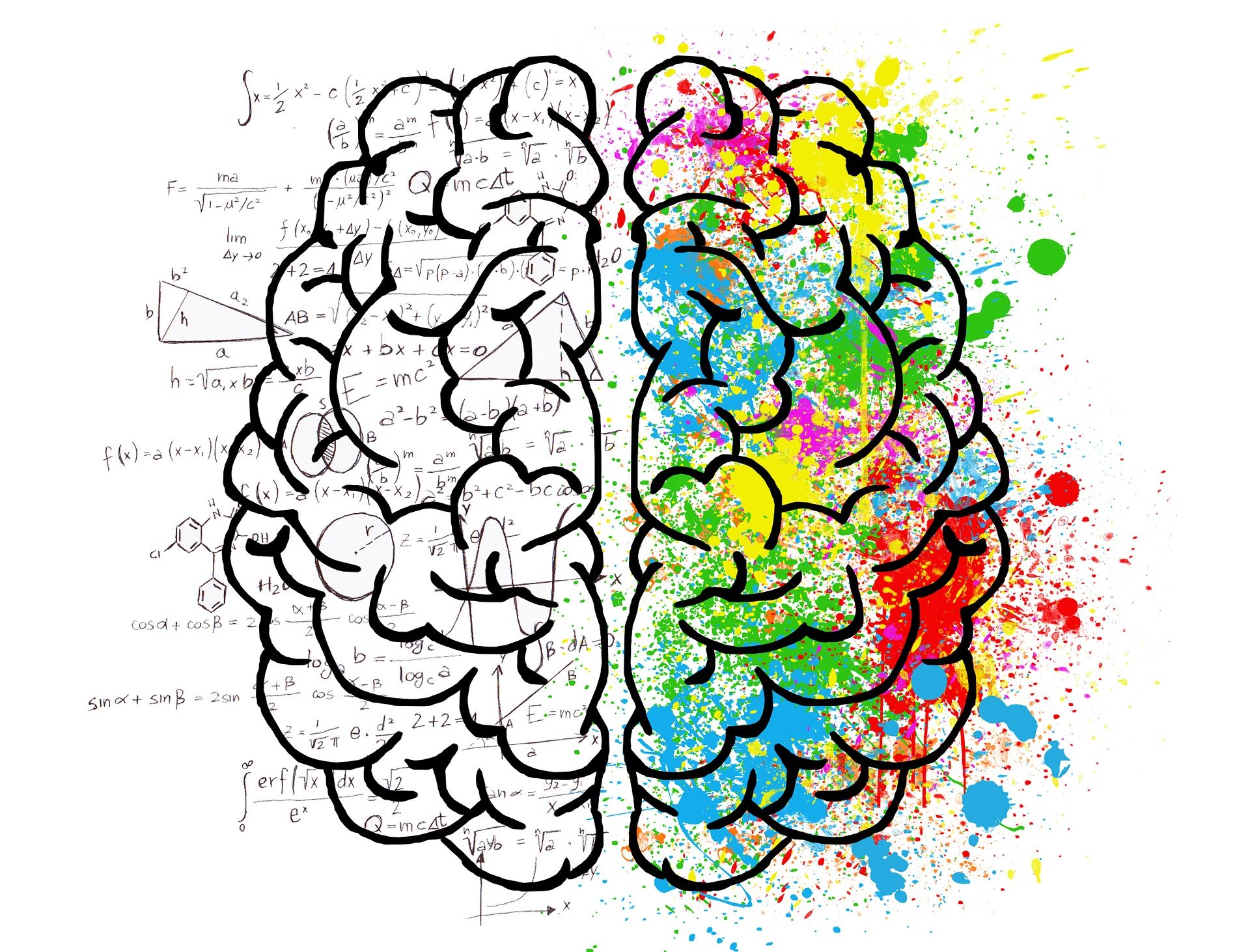
Today between 6.000 and 8.000 people with Parkinson live in Norway. This number will increase further in an increasingly older society. Understanding of risk factors and pathological changes in Parkinson patients is important to improve health care for patients.
The aim of this project is to study advanced three-dimensional models for human shapes like brain structures that contain a rich set of geometrical information.
Further, based on the shape models, we like to develop methods that allow for sensitive statistical inferences in order to detect global and local shape changes in Parkinson and to find associations with other medical covariates.
Taking part from BMDLab: Ass.prof. Jörn Schulz, professor Jan Terje Kvaløy, PhD student Mohsen Taheri Shalmani
Publications
Taheri, Mohsen, Stephen M. Pizer, and Jörn Schulz. 2023. ‘Fitting the Discrete Swept Skeletal Representation to Slabular Objects’. Preprint. In Review. https://doi.org/10.21203/rs.3.rs-2927062/v1.
Taheri, Mohsen, and Jörn Schulz. 2023. ‘Statistical Analysis of Locally Parameterized Shapes’. Journal of Computational and Graphical Statistics 32 (2): 658–70. https://doi.org/10.1080/10618600.2022.2116445.
Investigation of Cognitive Decline using Metabolite and Functional Magnetic Resonance Imaging
Over the last few decades, population aging has been a prevalent and long-lasting phenomenon.

As people live longer, age-related diseases and health problems increase, leading to cognitive impairment and dementia being more relevant as a research topic. Metabolite MR imaging can provide potential biomarkers for detecting and characterizing neurodegenerative diseases and cognitive impairment. Functional magnetic resonance imaging offers non-invasive insights into the aging human brain, measuring neural activity through blood flow and oxygen level changes during tasks or at rest.
From BMDLab: Morteza Esmaeili, Kathinka D. Kurz, Casper Cappelen
Collaborators: Sven Ole Aase
AI-assisted prostate cancer detection from MRI
Prostate cancer (PC) is the second most diagnosed cancer and the fifth leading cause of death worldwide.

In Norway, it is the most frequent type of cancer amongst men. Whilst PC incidence is high, an early detection can significantly reduce PC mortality. In particular, evidence has been shown in a different number of studies of the benefit of incorporating MRI in the early detection of PC. However, assessment of MRI can be time-intensive and requires considerable expertise.
In this project, we aim at developing AI tools to assist radiologists in analyzing prostate MRI data including but not limited to segmentation and high-grade cancer detection. Ultimately, the project aims at providing clinicians with a robust and intuitive tool for MRI prostate analysis in the context of PC. The project is a collaboration between University of Stavanger (UiS) and Stavanger University Hospital (SUS), with international collaborators such as Karolinska Institutet (KI).
From BMDLab: Alvaro Fernandez-Quilez, Trygve Eftestøl
Publications
Fernandez-Quilez, Alvaro, Trygve Eftestol, Svein Reidar Kjosavik, Morten Goodwin, og Ketil Oppedal. 2022a. «Contrasting Axial T2W MRI for Prostate Cancer Triage: A Self-Supervised Learning Approach». I 2022 IEEE 19th International Symposium on Biomedical Imaging (ISBI), 1–5. Kolkata, India: IEEE. https://doi.org/10.1109/ISBI52829.2022.9761573.
Fernandez-Quilez, Alvaro, Trygve Eftestol, Svein Reidar Kjosavik, Morten Goodwin, og Ketil Oppedal. 2022b. «Multi-Planar T2W MRI for an Improved Prostate Cancer Lesion Classification». I 2022 IEEE 19th International Symposium on Biomedical Imaging (ISBI), 1–5. Kolkata, India: IEEE. https://doi.org/10.1109/ISBI52829.2022.9761514.
Fernandez-Quilez, Alvaro, Trygve Eftestøl, Svein Reidar Kjosavik, og Ketil Oppedal. 2022. «Learning to triage by learning to reconstruct: a generative self-supervised approach for prostate cancer based on axial T2w MRI». I Medical Imaging 2022: Computer-Aided Diagnosis, redigert av Khan M. Iftekharuddin, Karen Drukker, Maciej A. Mazurowski, Hongbing Lu, Chisako Muramatsu, og Ravi K. Samala, 87. San Diego, United States: SPIE. https://doi.org/10.1117/12.2610623.
Fernandez-Quilez, Alvaro, Christoffer Gabrielsen Andersen, Trygve Eftestøl, Svein Reidar Kjosavik, og Ketil Oppedal. 2023. «3D Masked Modelling Advances Lesion Classification in Axial T2w Prostate MRI». Proceedings of the Northern Lights Deep Learning Workshop 4 (januar). https://doi.org/10.7557/18.6787.
Fernandez-Quilez, Alvaro, Tobias Nordström, Trygve Eftestøl, Andreas Bremset Alvestad, Fredrik Jäderling, Svein Reidar Kjosavik, og Martin Eklund. 2023. «Revisiting Prostate Segmentation in Magnetic Resonance Imaging (MRI): On Model Transferability, Degradation and PI-RADS Adherence». Preprint. Radiology and Imaging. https://doi.org/10.1101/2023.08.21.23294376.
Fernandez‐Quilez, Alvaro, Tobias Nordström, Fredrik Jäderling, Svein Reidar Kjosavik, og Martin Eklund. 2023. «Prostate Age Gap: An MRI Surrogate Marker of Aging for Prostate Cancer Detection». Journal of Magnetic Resonance Imaging, oktober, jmri.29090. https://doi.org/10.1002/jmri.29090.
Fernandez-Quilez, Alvaro, Omer Parvez, Trygve Eftestøl, Svein Reidar Kjosavik, og Ketil Oppedal. 2022. «Improving prostate cancer triage with GAN-based synthetically generated prostate ADC MRI». I Medical Imaging 2022: Computer-Aided Diagnosis, redigert av Khan M. Iftekharuddin, Karen Drukker, Maciej A. Mazurowski, Hongbing Lu, Chisako Muramatsu, og Ravi K. Samala, 81. San Diego, United States: SPIE. https://doi.org/10.1117/12.2606557.
Fernandez-Quilez, Alvaro, Habib Ullah, Trygve Eftestøl, Svein Reidar Kjosavik, og Ketil Oppedal. 2022. «One class to rule them all: detection and classification of prostate tumors presence in bi-parametric MRI based on auto-encoders». I Medical Imaging 2022: Computer-Aided Diagnosis, redigert av Khan M. Iftekharuddin, Karen Drukker, Maciej A. Mazurowski, Hongbing Lu, Chisako Muramatsu, og Ravi K. Samala, 82. San Diego, United States: SPIE. https://doi.org/10.1117/12.2602884.
Fernandez-Quilez, Alvaro, Linas Vidziunas, Ørjan Kløvfjell Thoresen, Ketil Oppedal, Svein Reidar Kjosavik, og Trygve Eftestøl. 2023. «Out-of-Distribution Multi-view auto-Encoders for Prostate Cancer Lesion Detection». I 2023 IEEE 20th International Symposium on Biomedical Imaging (ISBI), 1–5. Cartagena, Colombia: IEEE. https://doi.org/10.1109/ISBI53787.2023.10230363.
ACTIVITY RECOGNITION
Harnessing Radio Signals for Human Activity and Physiological Parameter Recognition
This project explores the innovative use of radio-based technology to recognize human activities and physiological parameters.
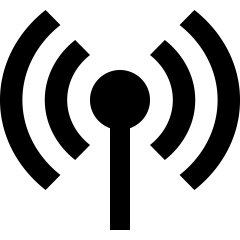
By leveraging radio signals, researchers aim to capture subtle variations in human movements and physiological signals such as heart rate, respiration rate, and body temperature. These signals are analyzed using advanced signal processing and machine learning algorithms to infer various human activities and health-related parameters. This approach offers a non-intrusive and unobtrusive means of monitoring individuals, enabling applications in healthcare, wellness monitoring, and ambient assisted living. The research seeks to advance the field of radio-based sensing and contribute to the development of novel technologies for human-centric applications.
From BMDLab: Florenc Demrozi
Publications
Demrozi, Florenc, Fabio Chiarani, og Graziano Pravadelli. 2021. «A low-cost BLE-based distance estimation, occupancy detection and counting system». I 2021 Design, Automation & Test in Europe Conference & Exhibition (DATE), 1430–33. Grenoble, France: IEEE. https://doi.org/10.23919/DATE51398.2021.9474150.
Demrozi, Florenc, Cristian Turetta, Fabio Chiarani, Philipp H. Kindt, og Graziano Pravadelli. 2021. «Estimating Indoor Occupancy Through Low-Cost BLE Devices». IEEE Sensors Journal 21 (15): 17053–63. https://doi.org/10.1109/JSEN.2021.3080632.
Turetta, Cristian, Florenc Demrozi, Sofia Franceschi, Davide Zamboni, og Graziano Pravadelli. 2023. «Non-Invasive Monitoring of Alzheimer’s patients through WiFi Channel State Information». I 2023 9th International Workshop on Advances in Sensors and Interfaces (IWASI), 103–8. Monopoli (Bari), Italy: IEEE. https://doi.org/10.1109/IWASI58316.2023.10164475.
Turetta, Cristian, Florenc Demrozi, Philipp H. Kindt, Alejandro Masrur, og Graziano Pravadelli. 2022. «Practical identity recognition using WiFi’s Channel State Information». I 2022 Design, Automation & Test in Europe Conference & Exhibition (DATE), 76–79. Antwerp, Belgium: IEEE. https://doi.org/10.23919/DATE54114.2022.9774772.
Turetta, Cristian, Geri Skenderi, Luigi Capogrosso, Florenc Demrozi, Philipp H. Kindt, Alejandro Masrur, Franco Fummi, Marco Cristani, og Graziano Pravadelli. 2023. «Towards Deep Learning-based Occupancy Detection Via WiFi Sensing in Unconstrained Environments». I 2023 Design, Automation & Test in Europe Conference & Exhibition (DATE), 1–6. Antwerp, Belgium: IEEE. https://doi.org/10.23919/DATE56975.2023.10137260.
Human Activity Recognition through Body and Home Wireless Area Networks
This project focuses on utilizing wireless body and home area networks (WBANs and HANs) for human activity recognition (HAR).

By integrating sensors into wearable devices and smart home appliances, researchers aim to capture and analyze data related to human activities such as walking, running, sitting, and sleeping. The wireless connectivity allows for seamless data transmission and monitoring, enabling real-time recognition of daily activities. This research contributes to the development of assistive technologies, healthcare monitoring systems, and smart home automation by providing insights into human behavior and activity patterns.
From BMDLab: Florenc Demrozi
Publications
Demrozi, Florenc, og Graziano Pravadelli. 2022. «SHPIA: A Low-Cost Multi-Purpose Smart Home Platform for Intelligent Applications». I Internet of Things. IoT through a Multi-Disciplinary Perspective, redigert av Luis M. Camarinha-Matos, Luis Ribeiro, og Leon Strous, 665:217–34. IFIP Advances in Information and Communication Technology. Cham: Springer International Publishing. https://doi.org/10.1007/978-3-031-18872-5_13.
Demrozi, Florenc, Cristian Turetta, Philipp H. Kindt, Fabio Chiarani, Ruggero Angelo Bacchin, Nicola Valè, Francesco Pascucci, mfl. 2023. «A Low-Cost Wireless Body Area Network for Human Activity Recognition in Healthy Life and Medical Applications». IEEE Transactions on Emerging Topics in Computing 11 (4): 839–50. https://doi.org/10.1109/TETC.2023.3274189.
Demrozi, Florenc, Cristian Turetta, og Graziano Pravadelli. 2023a. «Fostering Human Activity Recognition Workflows: An Open-Source Baseline Framework». I 2023 IEEE International Conference on Digital Health (ICDH), 75–80. Chicago, IL, USA: IEEE. https://doi.org/10.1109/ICDH60066.2023.00018.
Demrozi, Florenc, Cristian Turetta, og Graziano Pravadelli. 2023b. «SHPIA 2.0: An Easily Scalable, Low-Cost, Multi-Purpose Smart Home Platform for Intelligent Applications». SN Computer Science 5 (1): 42. https://doi.org/10.1007/s42979-023-02307-w.
Singh, Amandeep, Tiziana Margaria, og Florenc Demrozi. 2023. «CNN-based Human Activity Recognition on Edge Computing Devices». I 2023 IEEE International Conference on Omni-layer Intelligent Systems (COINS), 1–4. Berlin, Germany: IEEE. https://doi.org/10.1109/COINS57856.2023.10189270.
Turetta, Cristian, Florenc Demrozi, og Graziano Pravadelli. 2022. «A freely available system for human activity recognition based on a low-cost body area network». I 2022 IEEE 46th Annual Computers, Software, and Applications Conference (COMPSAC), 395–400. Los Alamitos, CA, USA: IEEE. https://doi.org/10.1109/COMPSAC54236.2022.00062.
Monitoring Motor Symptoms in Parkinson's Disease with Wearable Devices
This project focuses on using wearable technology to study the impact of motor symptoms on individuals with Parkinson's disease (PD).
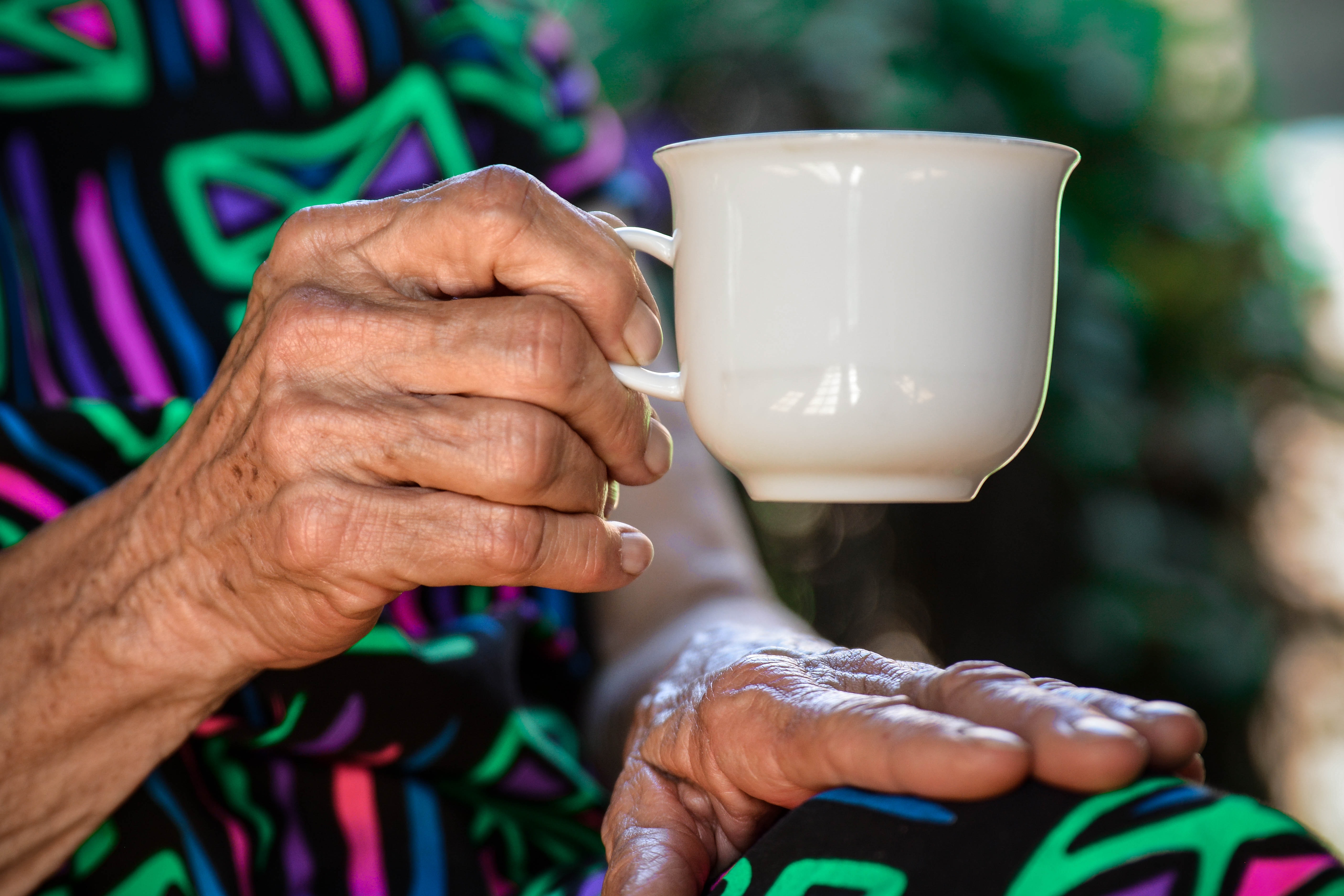
By utilizing Wearable Body Area Network (WBAN) technology, researchers aim to continuously monitor symptoms such as tremors, gait patterns, and Freezing of Gait (FOG). Additionally, the project evaluates the effectiveness of medication in managing motor symptoms. Through real-time data collection and analysis, this research aims to enhance our understanding of PD and improve treatment strategies for affected individuals.
From BMDLab: Florenc Demrozi
Publications
Demrozi, Florenc, Ruggero Bacchin, Stefano Tamburin, Marco Cristani, og Graziano Pravadelli. 2020. «Toward a Wearable System for Predicting Freezing of Gait in People Affected by Parkinson’s Disease». IEEE Journal of Biomedical and Health Informatics 24 (9): 2444–51. https://doi.org/10.1109/JBHI.2019.2952618.
Demrozi, Florenc, Vladislav Bragoi, Federico Tramarin, og Graziano Pravadelli. 2019. «An indoor localization system to detect areas causing the freezing of gait in Parkinsonians». I 2019 Design, Automation & Test in Europe Conference & Exhibition (DATE), 952–55. Florence, Italy: IEEE. https://doi.org/10.23919/DATE.2019.8715093.
Demrozi, Florenc, Nicola Serlonghi, Cristian Turetta, Cristiano Pravadelli, og Graziano Pravadelli. 2021. «Exploiting Bluetooth Low Energy smart tags for virtual coaching». I 2021 IEEE 7th World Forum on Internet of Things (WF-IoT), 470–75. New Orleans, LA, USA: IEEE. https://doi.org/10.1109/WF-IoT51360.2021.9595350.
Safer Births project Haydom, Tanzania
UiS is proud to contribute research and expertise in Safer Births, under the leadership of Laerdal Global Health and Stavanger University Hospital. The collaboration came out of a strong desire to make births safer for children and mothers in poor countries.
Obstetrician Paschal Mdoe earned a doctorate from UiS on fetal heart rate monitoring during births in his native Tanzania. In this video he talks about his work for the survival of newborn babies.
Researchers at BMDLAb
Doctoral fellows at BMDLab
Past PhD students, postdocs and visitors
Past PhD students:
- Alvaro Fernandez Quilez (2022)
- Rune Wetteland (2022)
- Vebjørn Kvikstad (2022)
- Kjell Le
- Jarle Urdal (2020)
- Øyvind Meinich-Bache (2020)
- Faraz Barzideh (2019)
Past post-doctoral researchers:
- Jarle Urdal (2020-2023)
- Mohanad Abukmeil (2022)
Past visiting PhD students:
- Jiahui Geng (2023)
- Yuandou Wang (2022)
- Zahra Tabatabaei (2021)
- Fernando Peréz Bueno (2021)
Related articles
Laboratories for automation technology
The Faculty of Science and Technology at UiS has several laboratories within the field of automation technology. Here is...
NewbornTime – Improved newborn care based on video and artificial intelligence
The NewbornTime project is about improved newborn care by using artificial intelligence (AI) for activity and event reco...
Among Norway's foremost women in Artifical Intelligence
Professor Kjersti Engan is listed as the 11th most influential woman in the field of artificial intelligence.
UiS establishes an interdisciplinary research group within tunnel safety
Aiming to promote innovation and achieving increased tunnel safety, a research group has been established at the Departm...
How to collaborate with Stavanger AI Lab?
Stavanger AI Lab opens up for several types of collaboration with society. We see it as our social mission to raise comp...
Department of Electrical Engineering and Computer Science
Department of Electrical Engineering and Computer Science is responsible for teaching, research and development within e...
Information Technology, Mathematics and Physics - PhD
The area of Information Technology, Mathematics and Physics is a subfield within the doctoral programme in Science and T...
